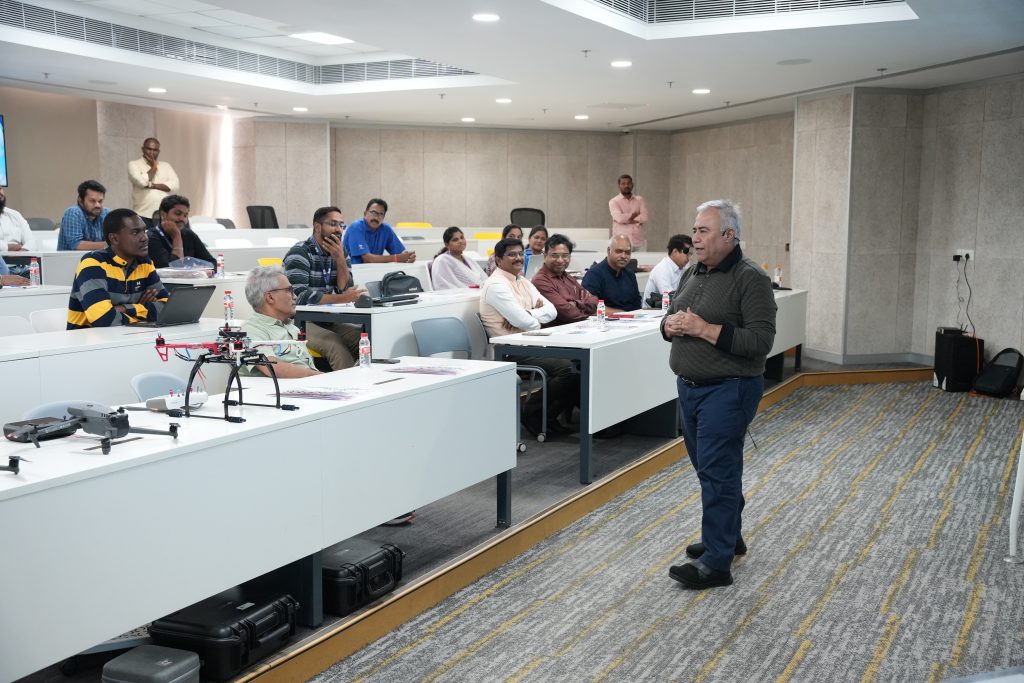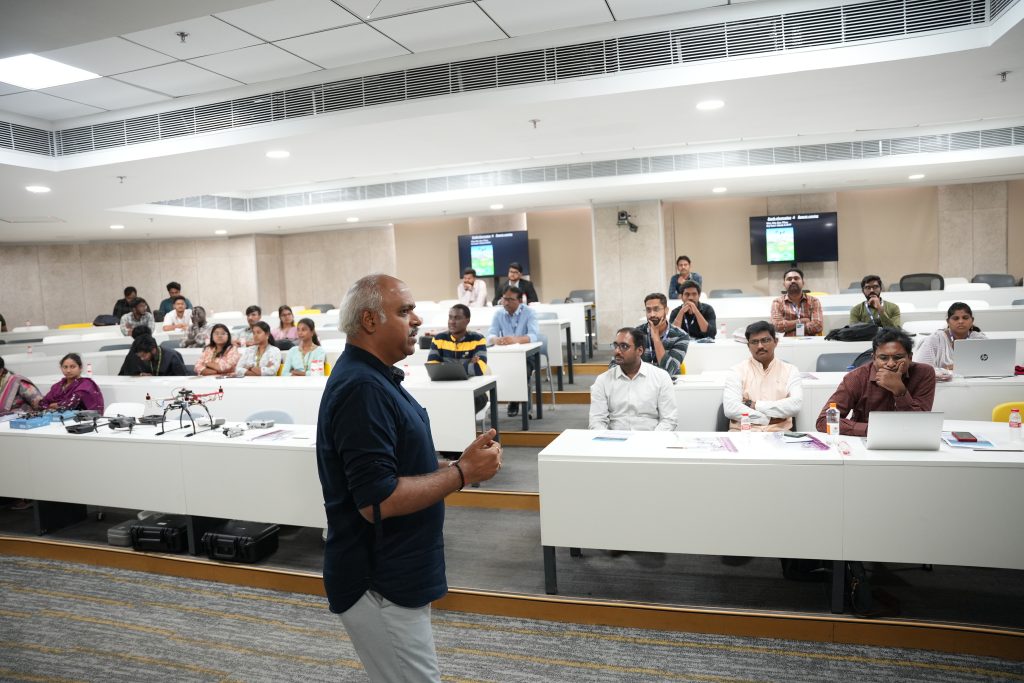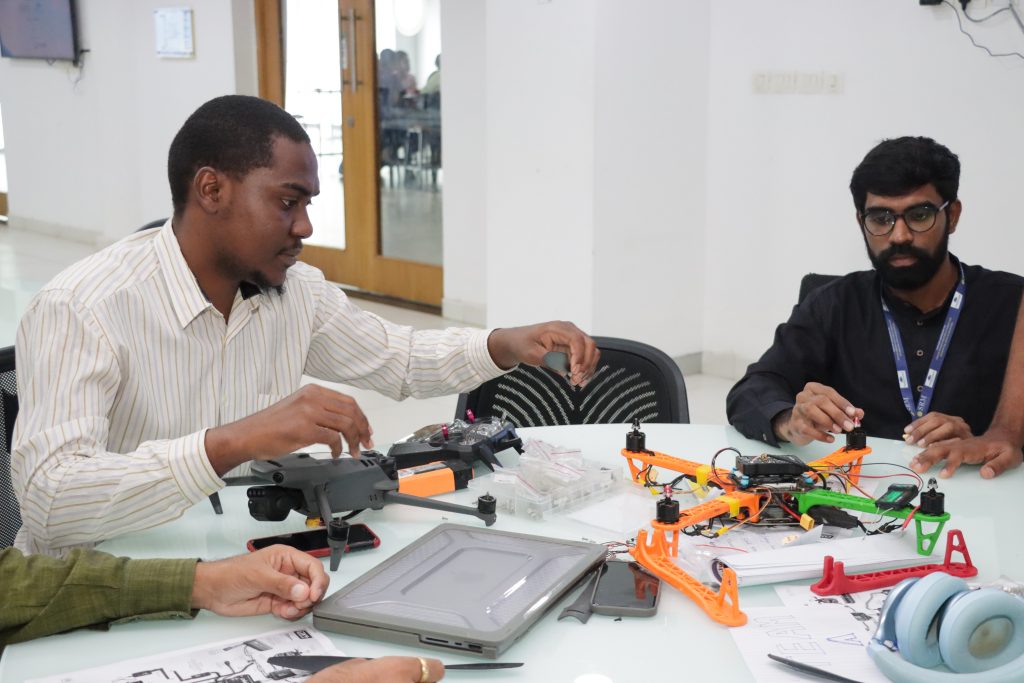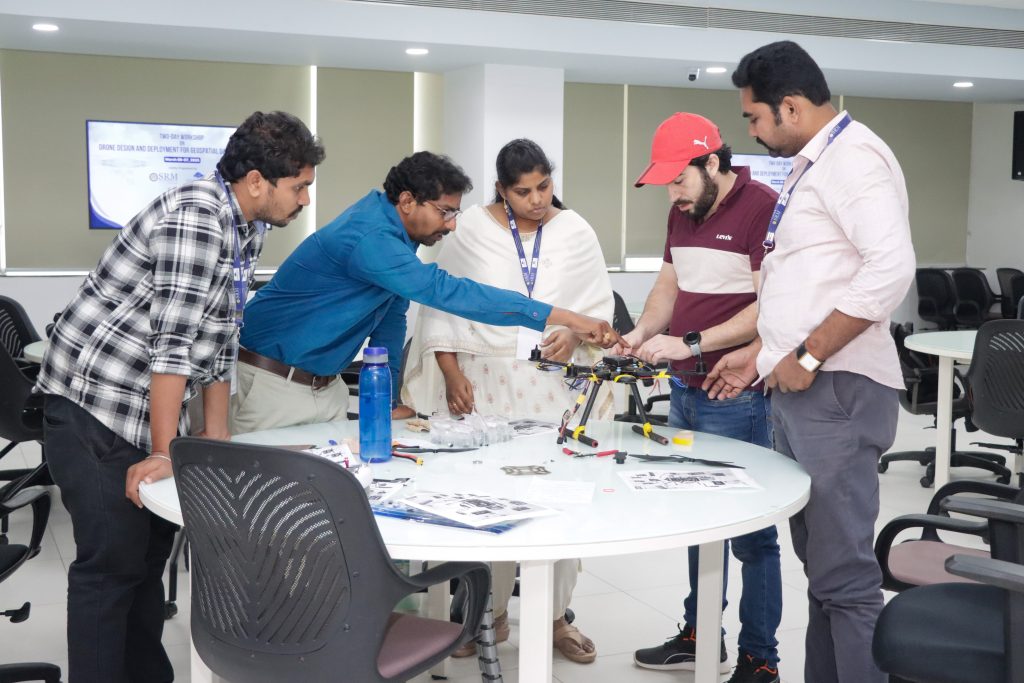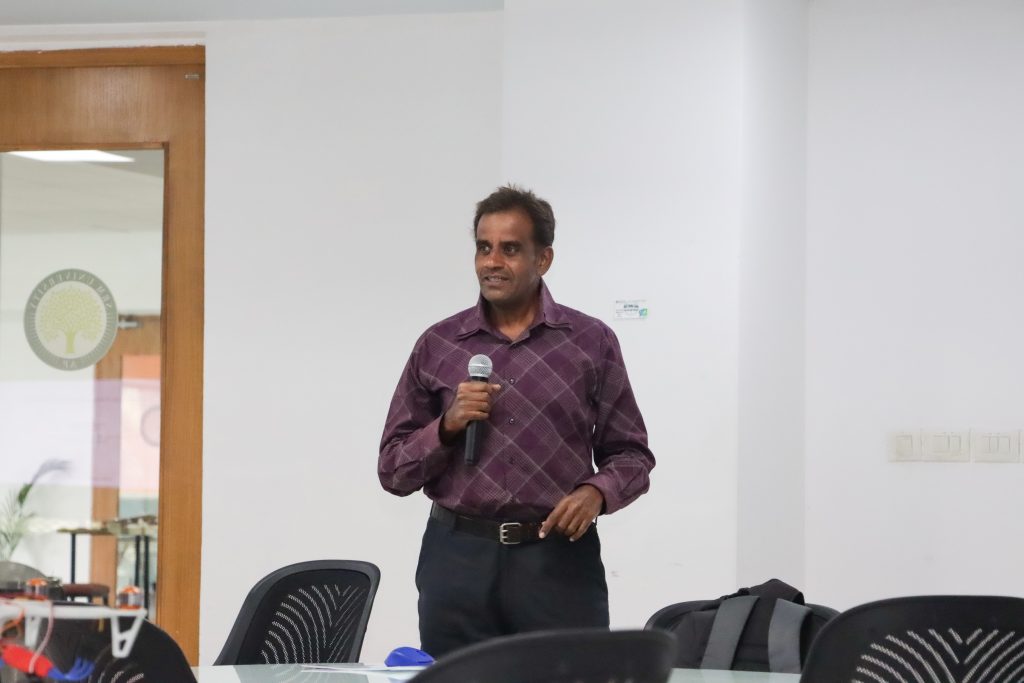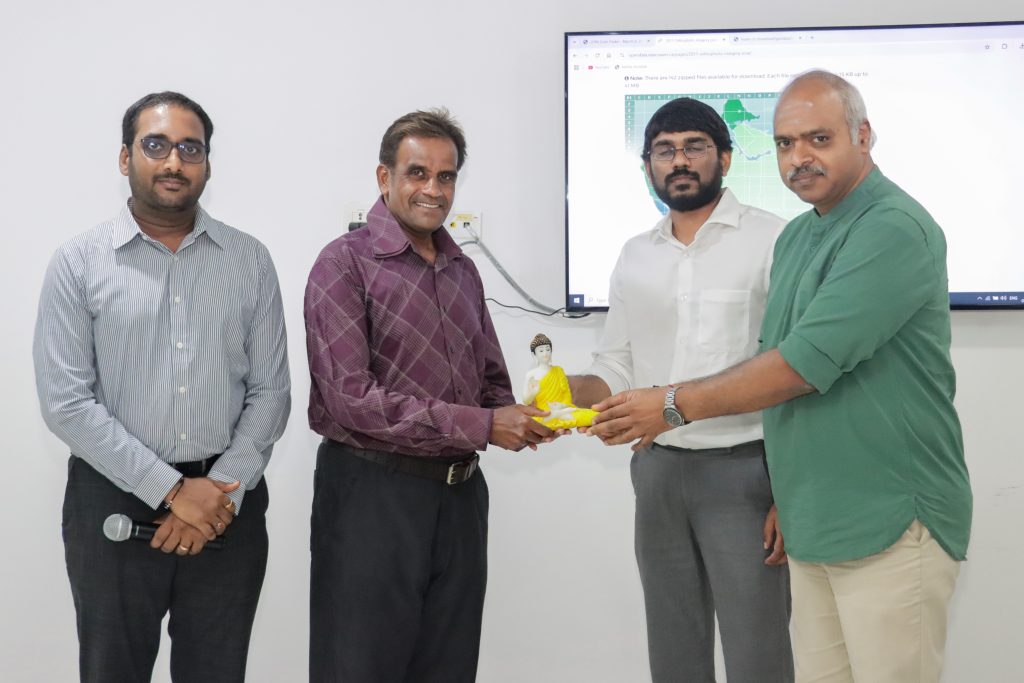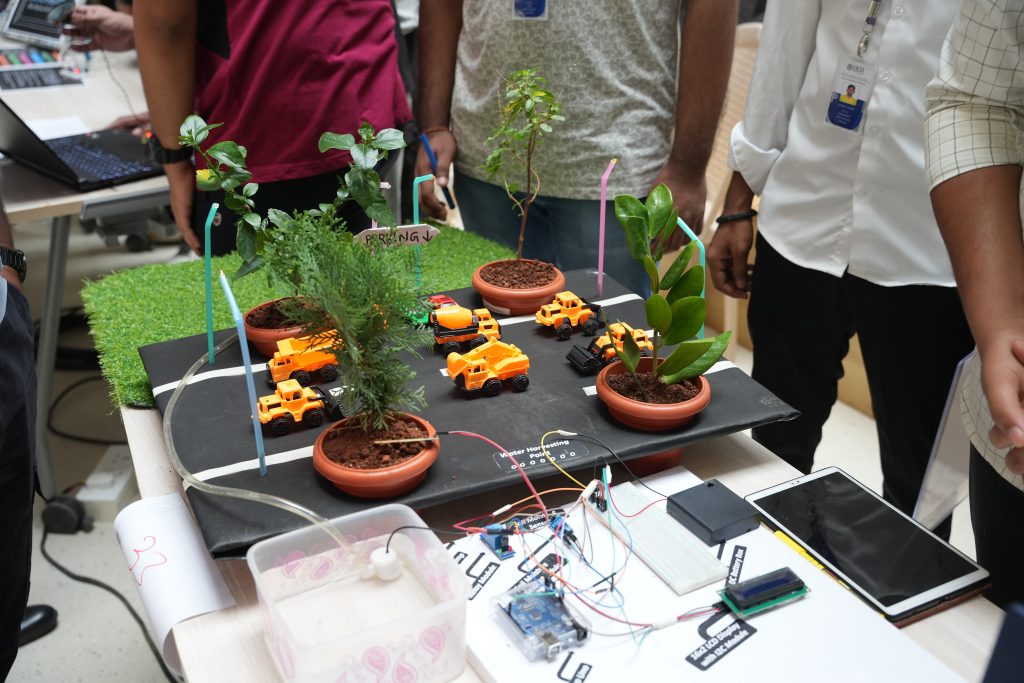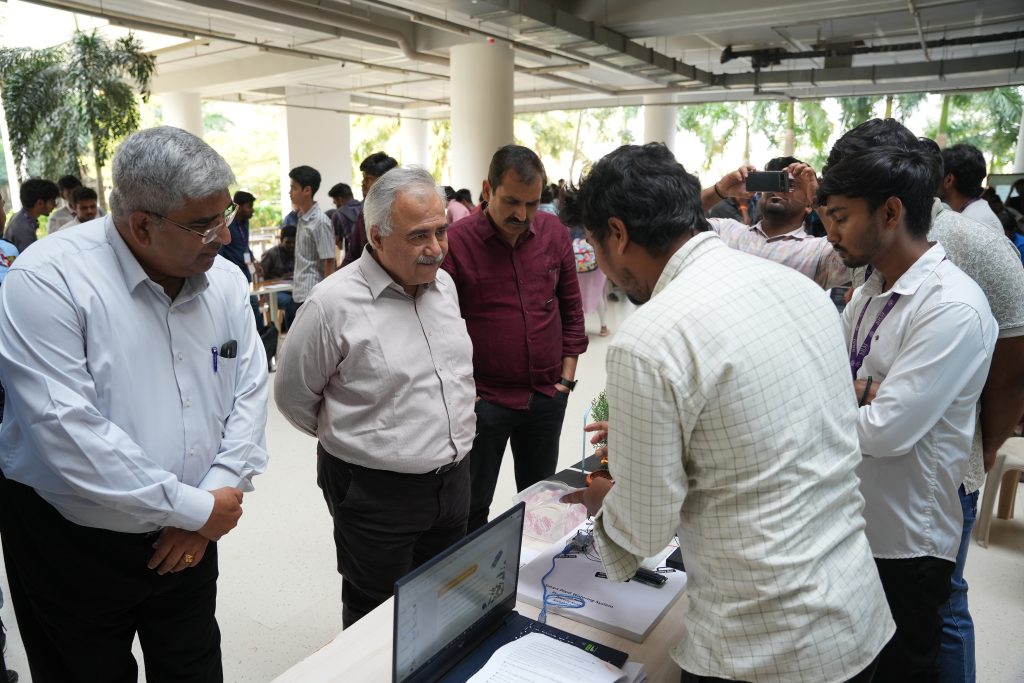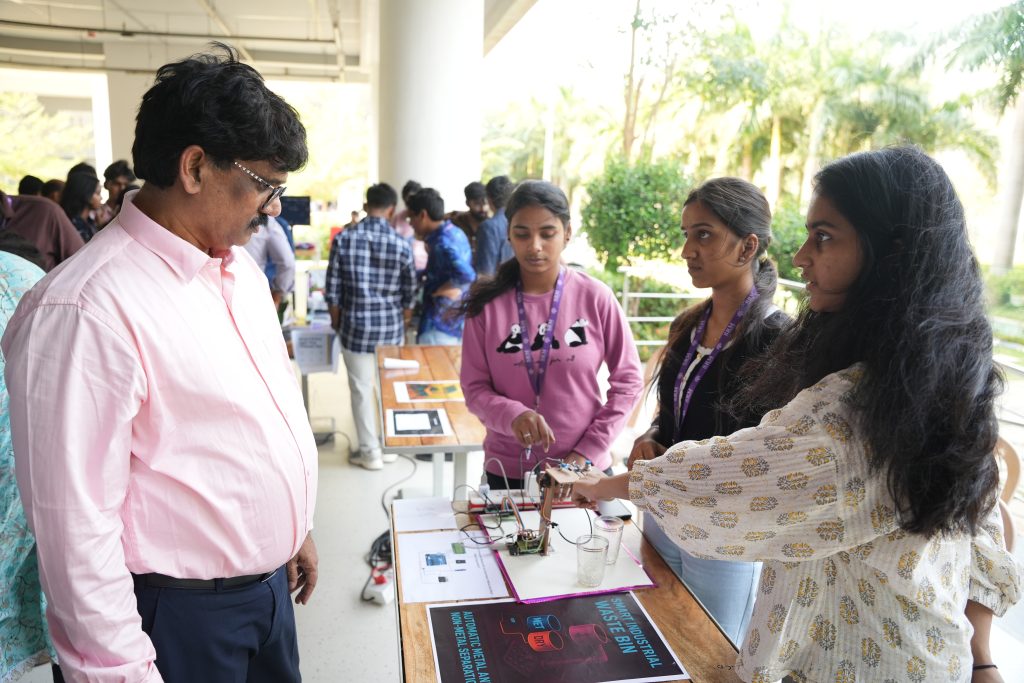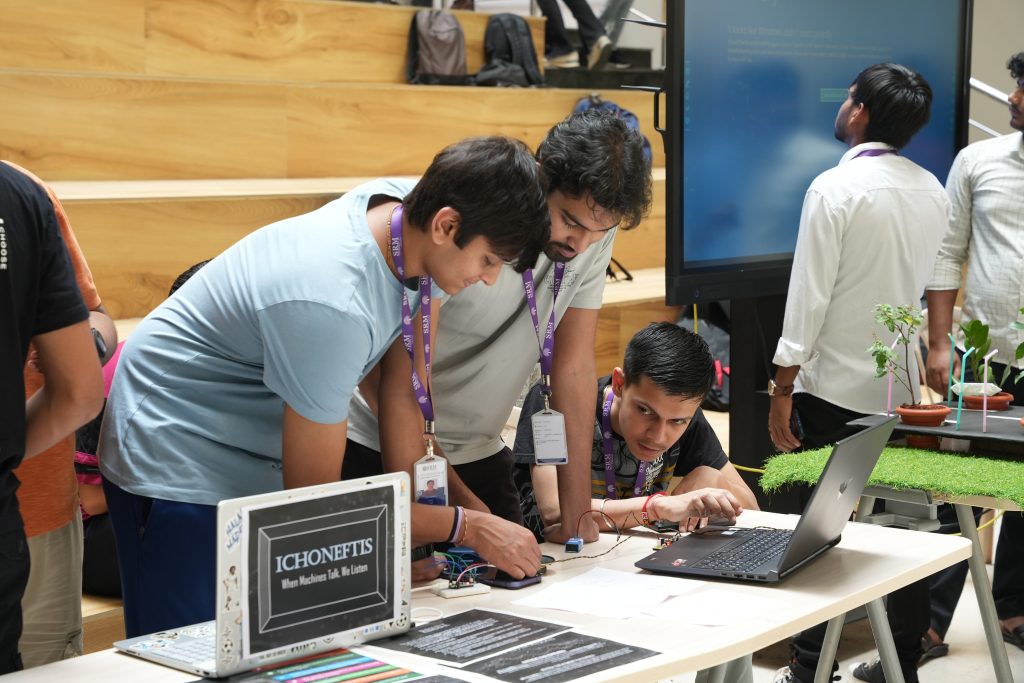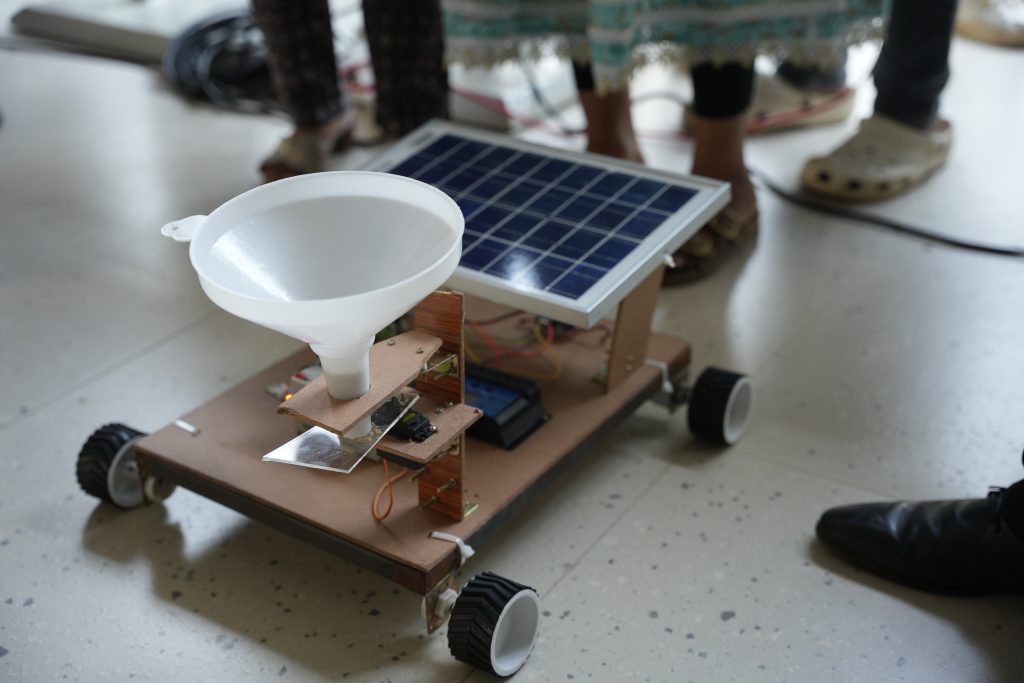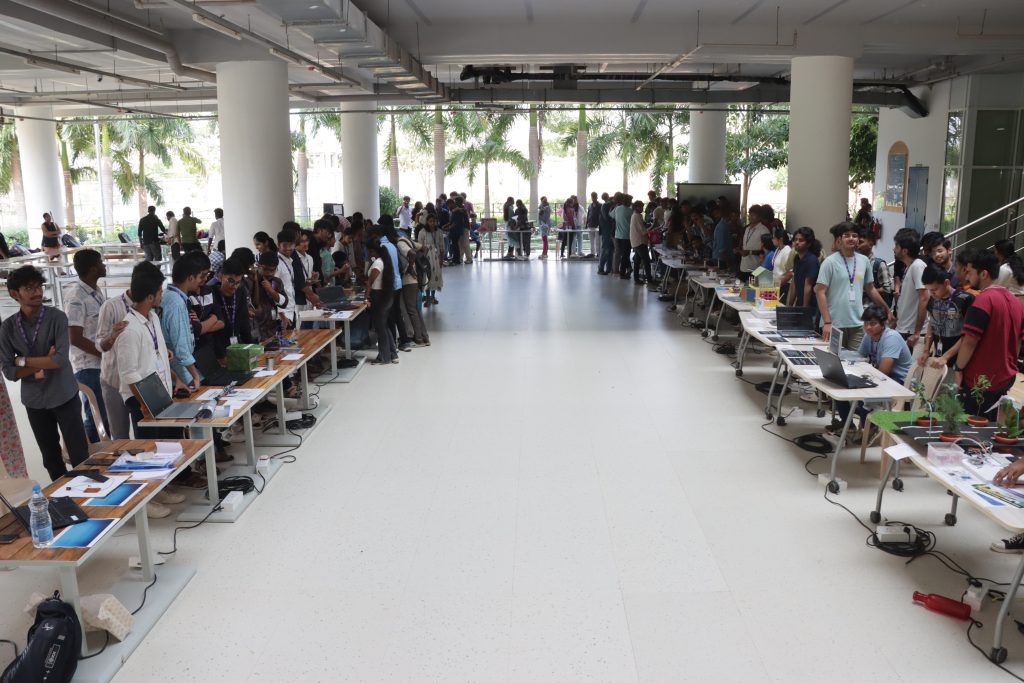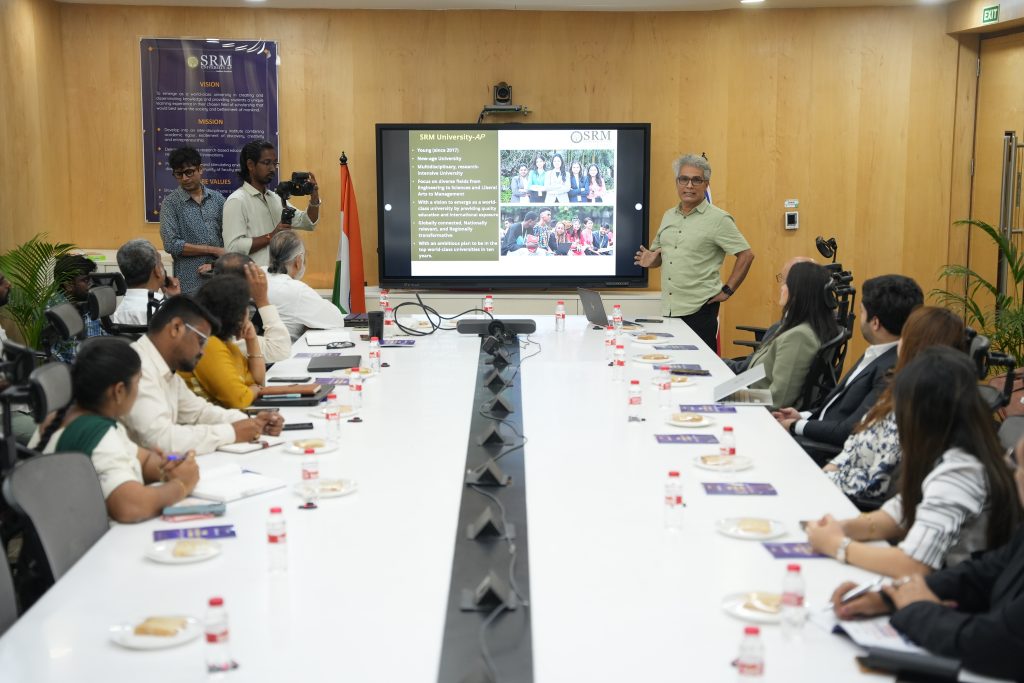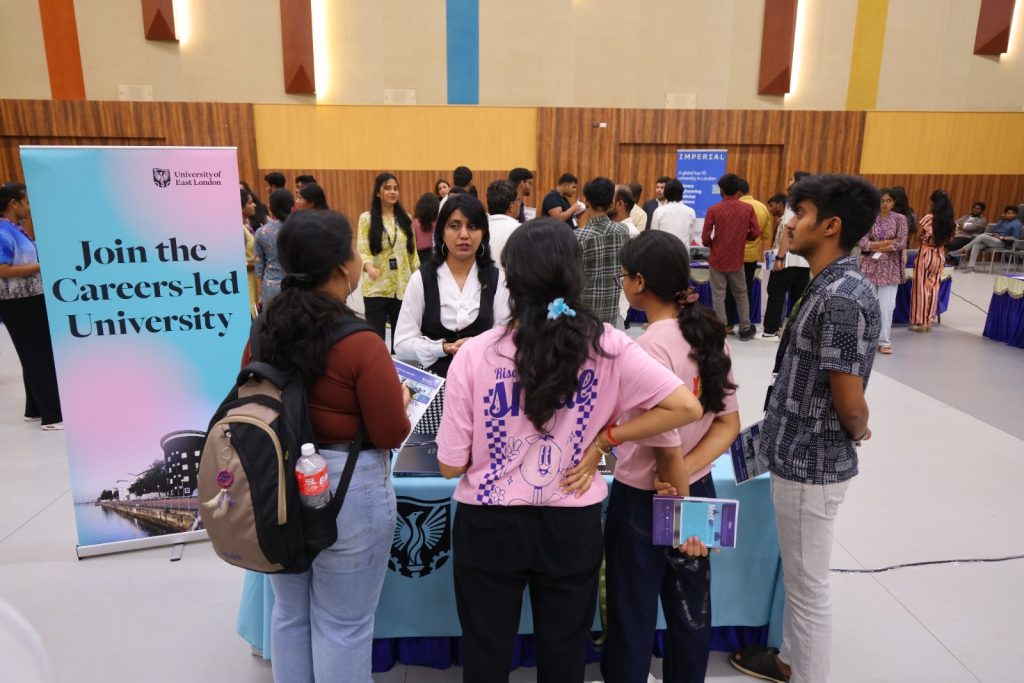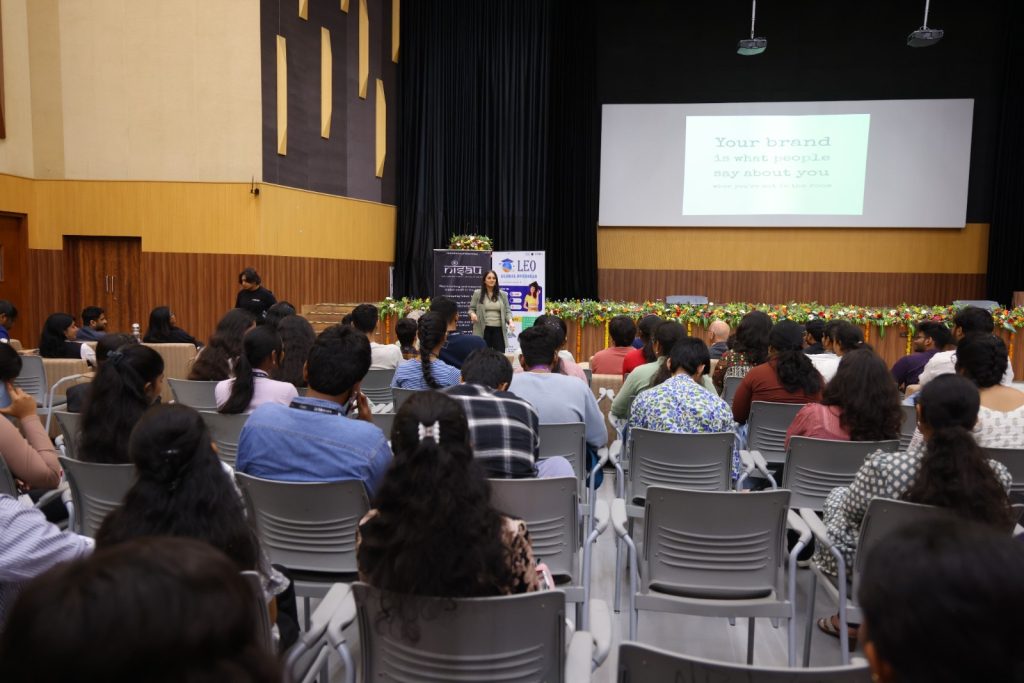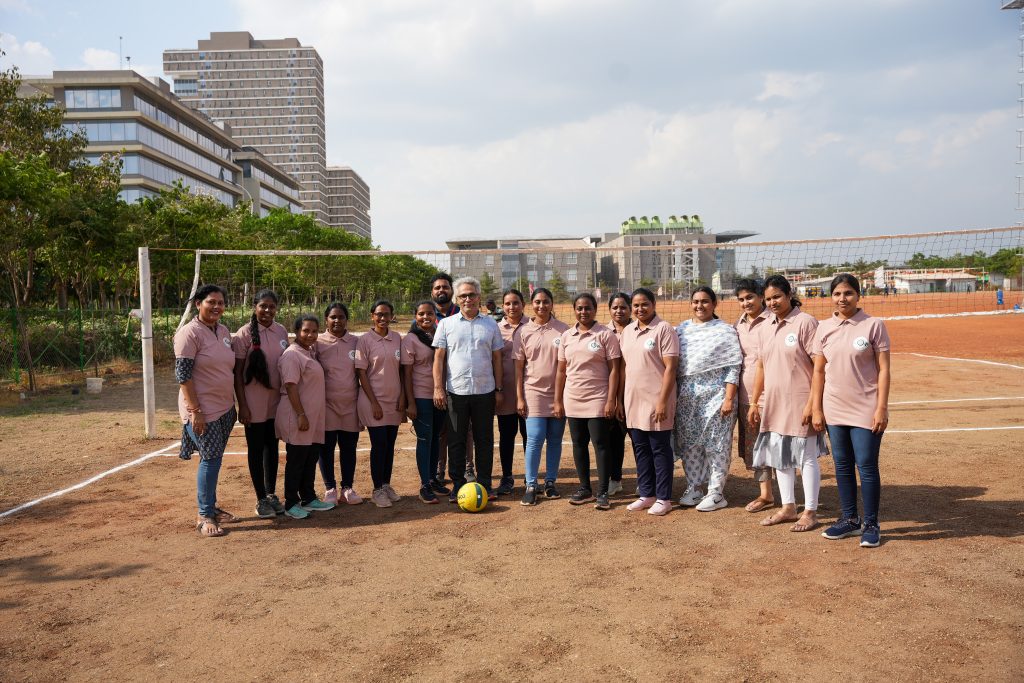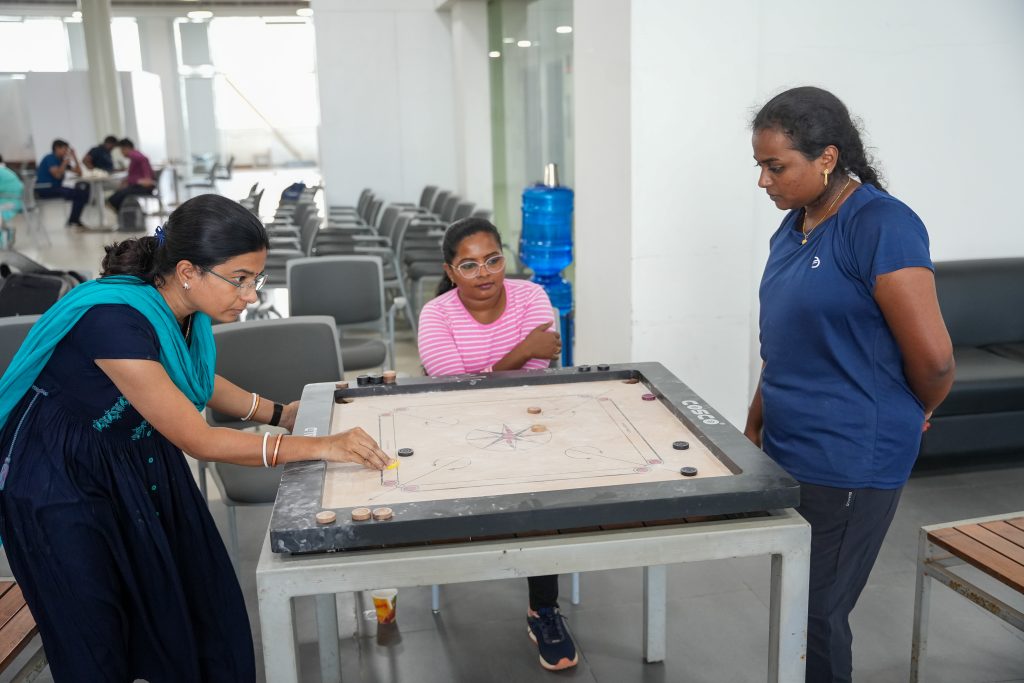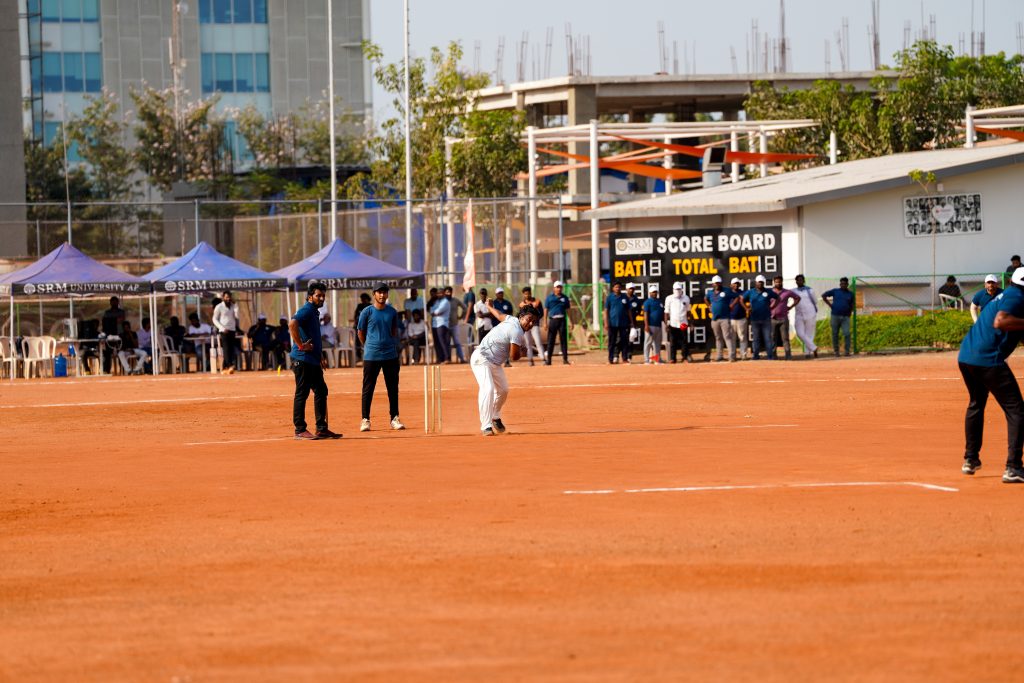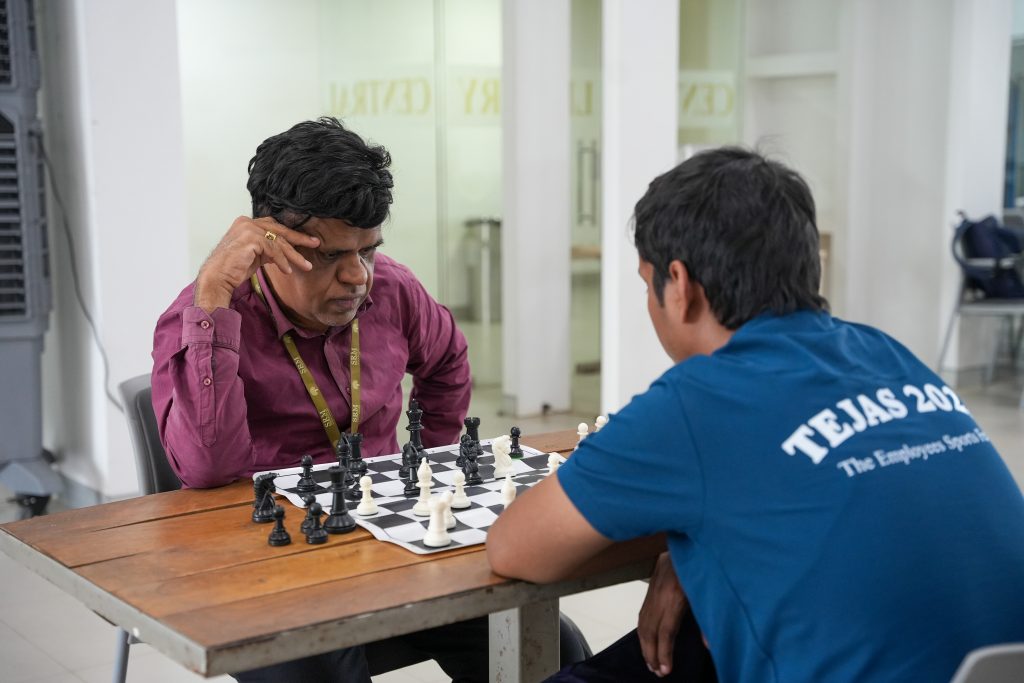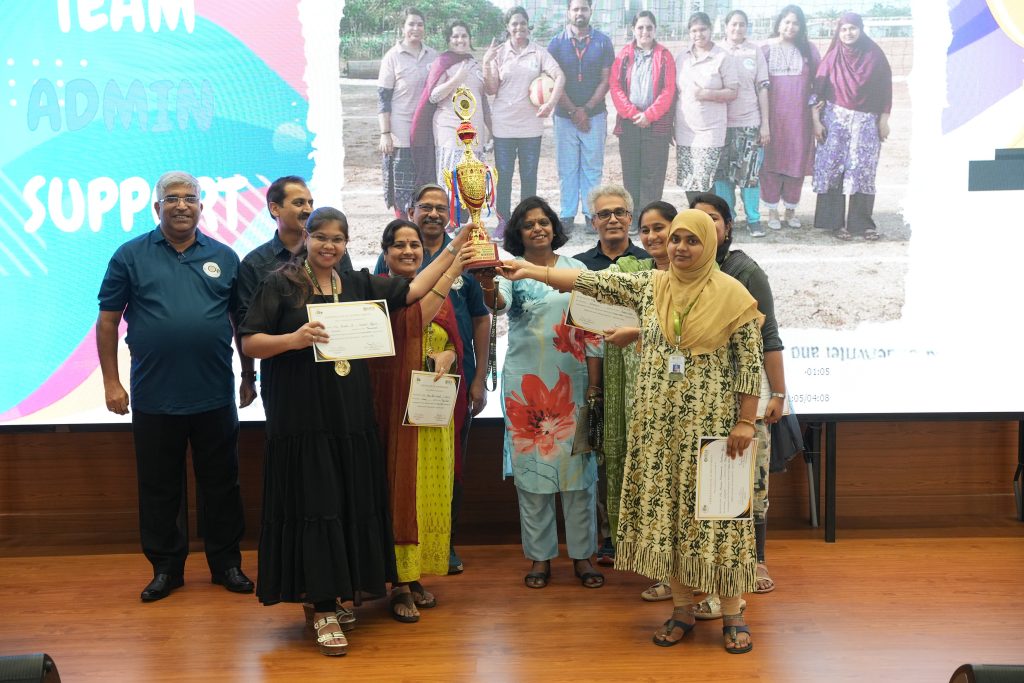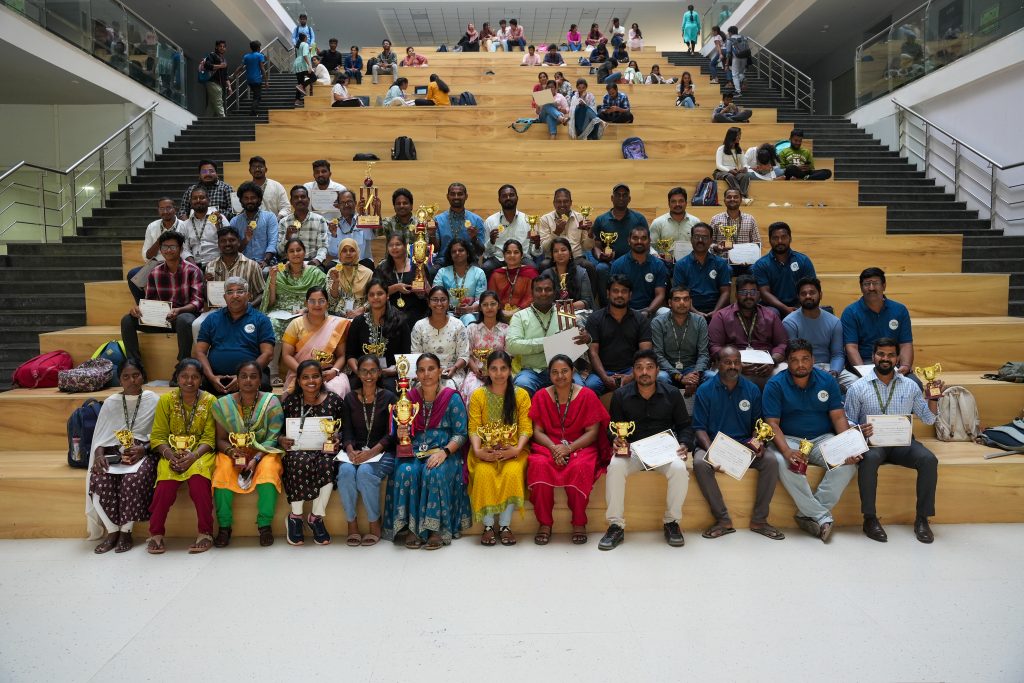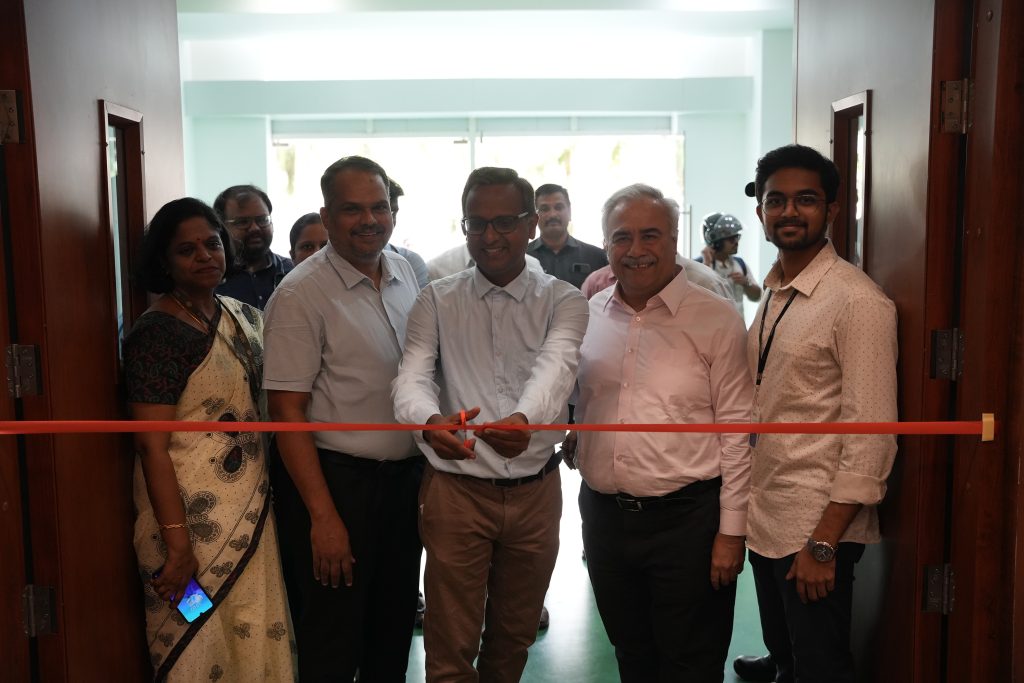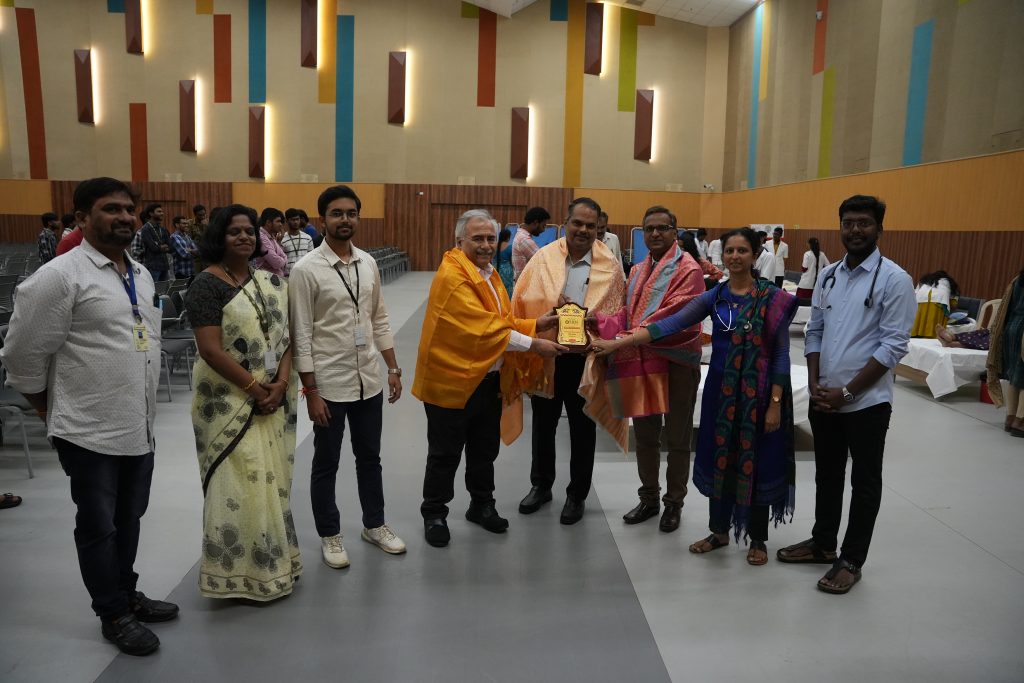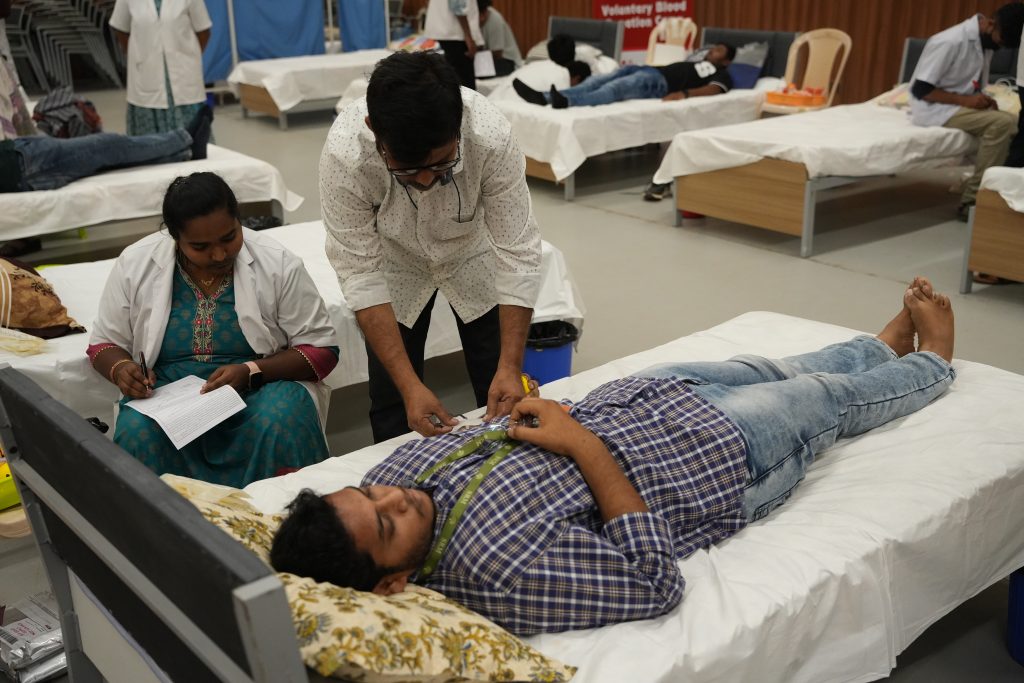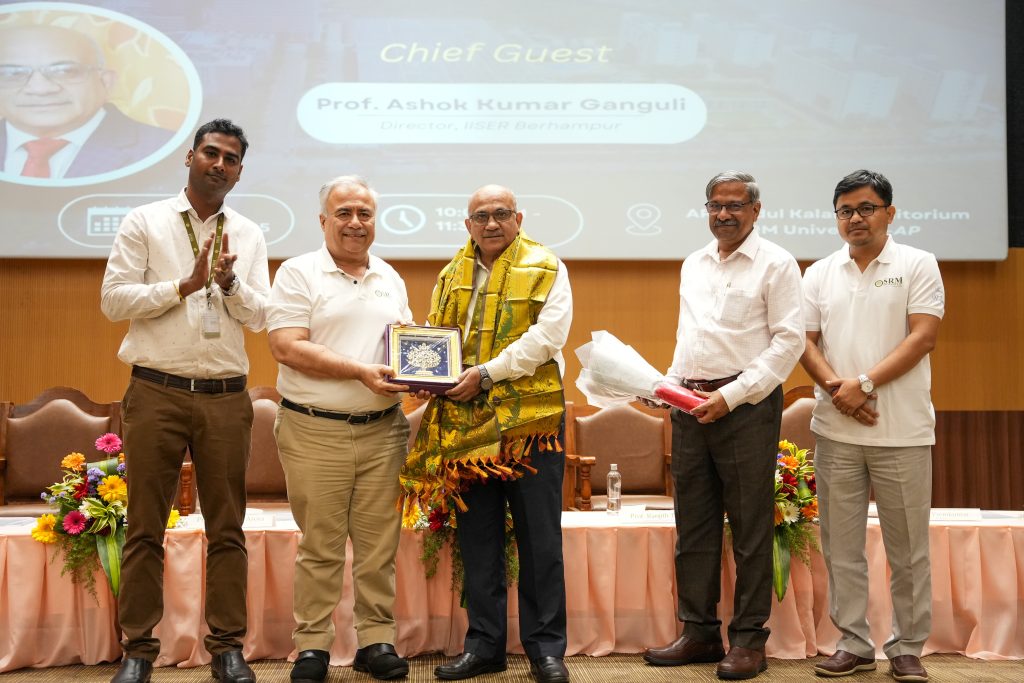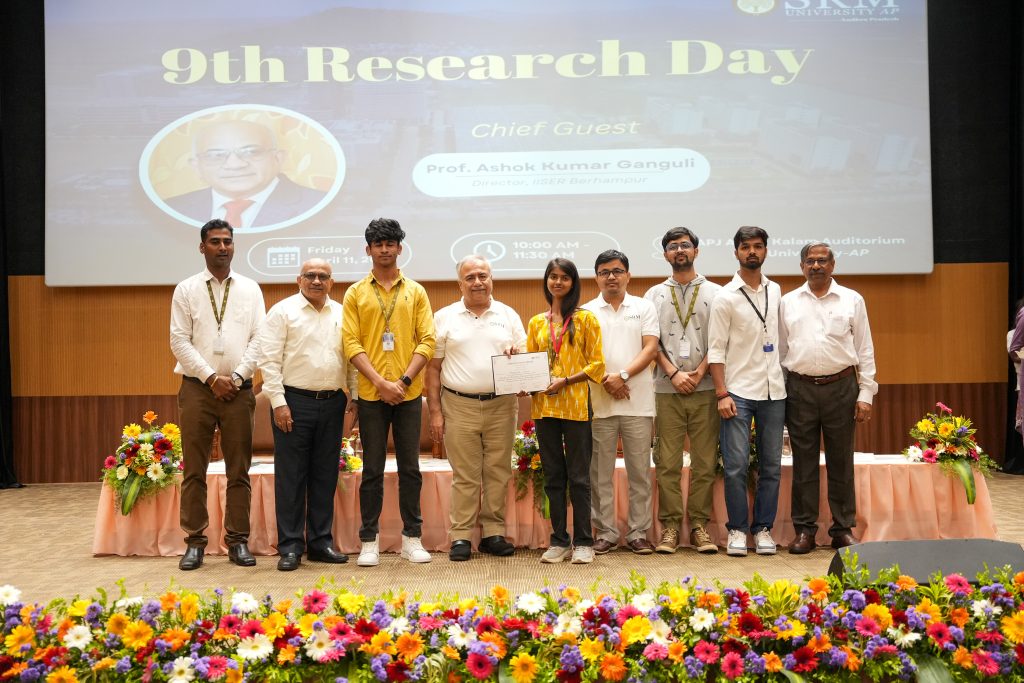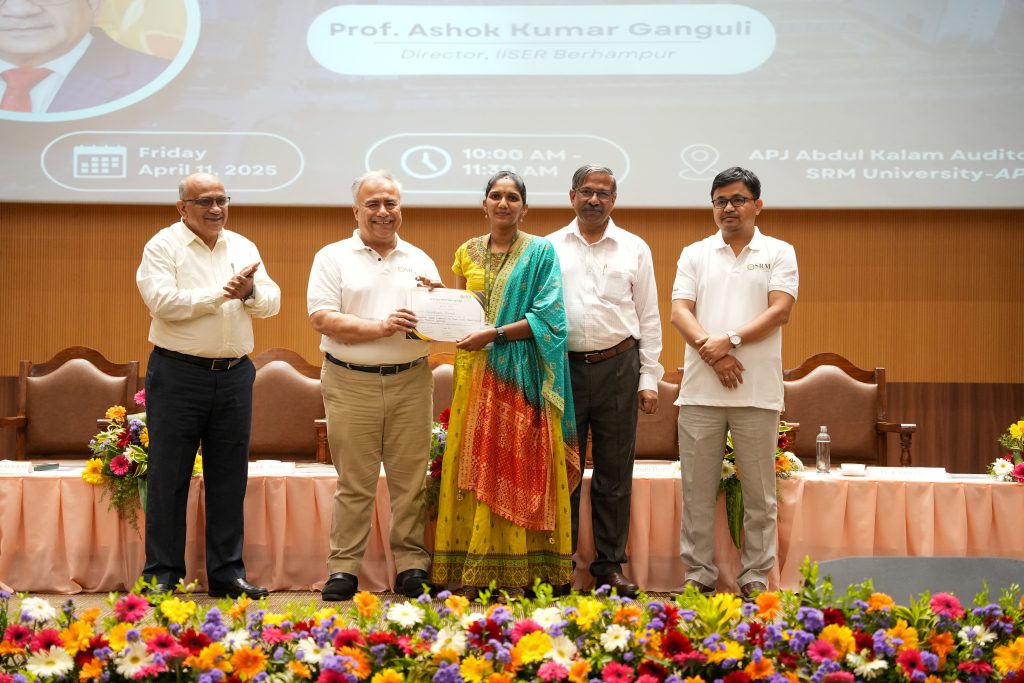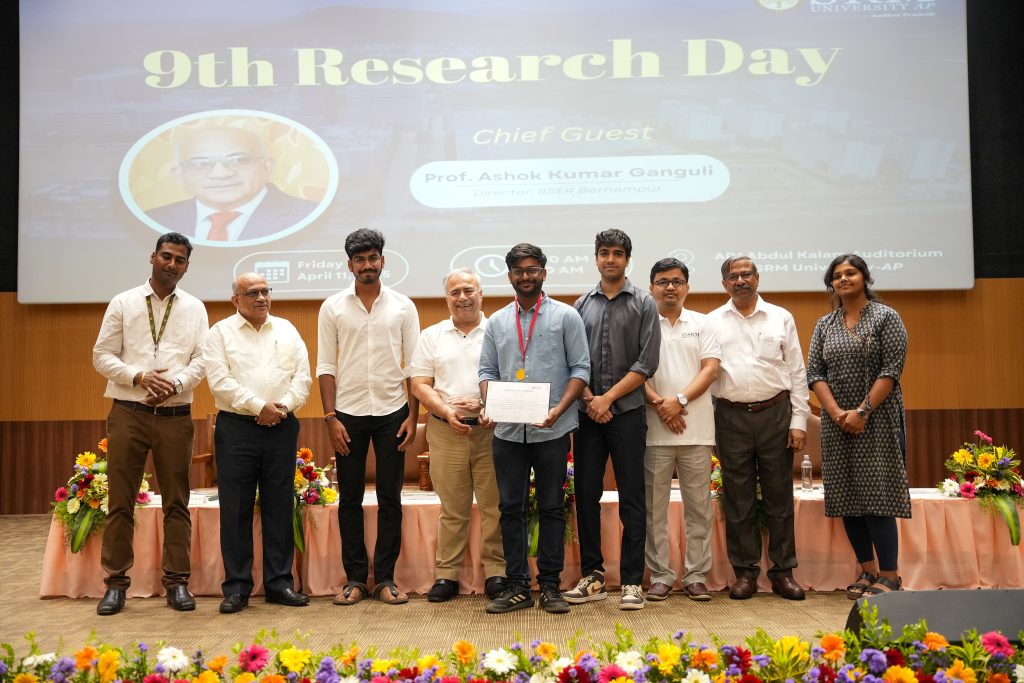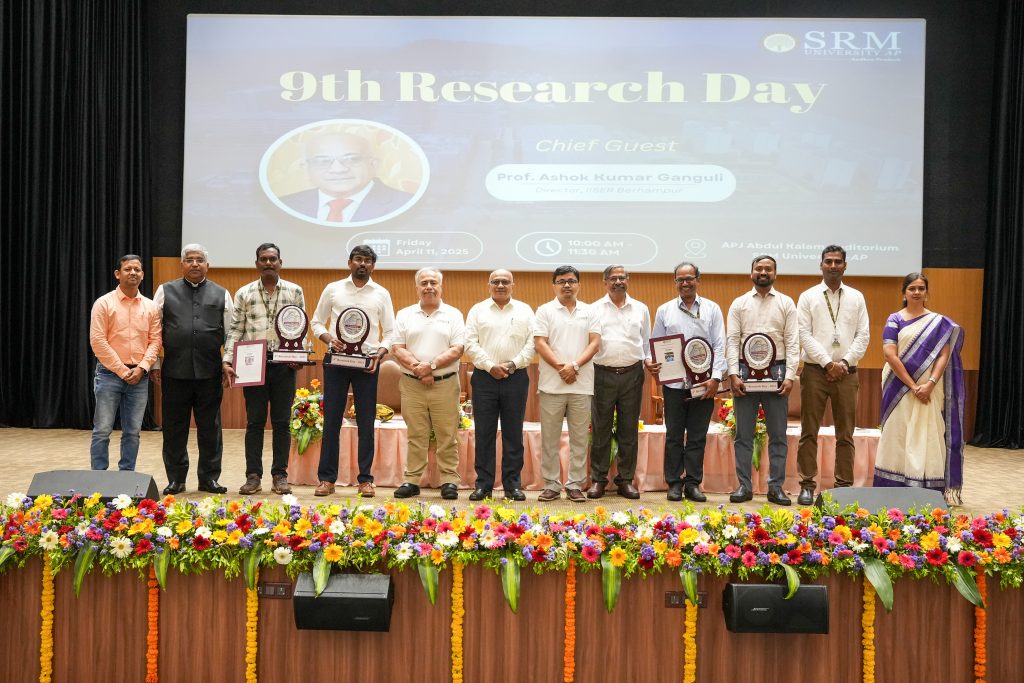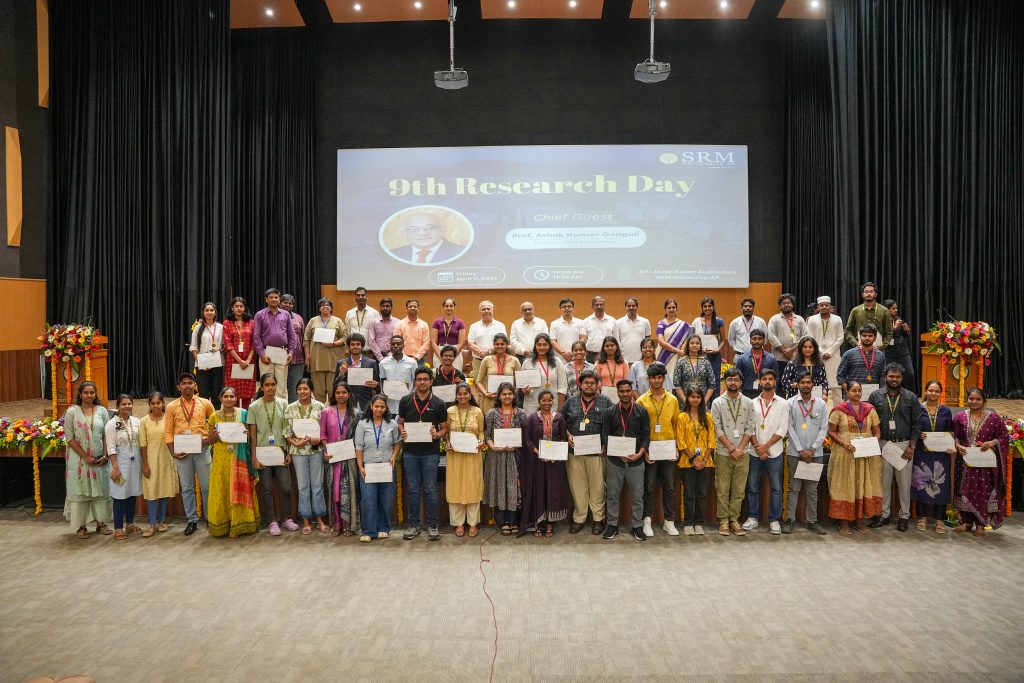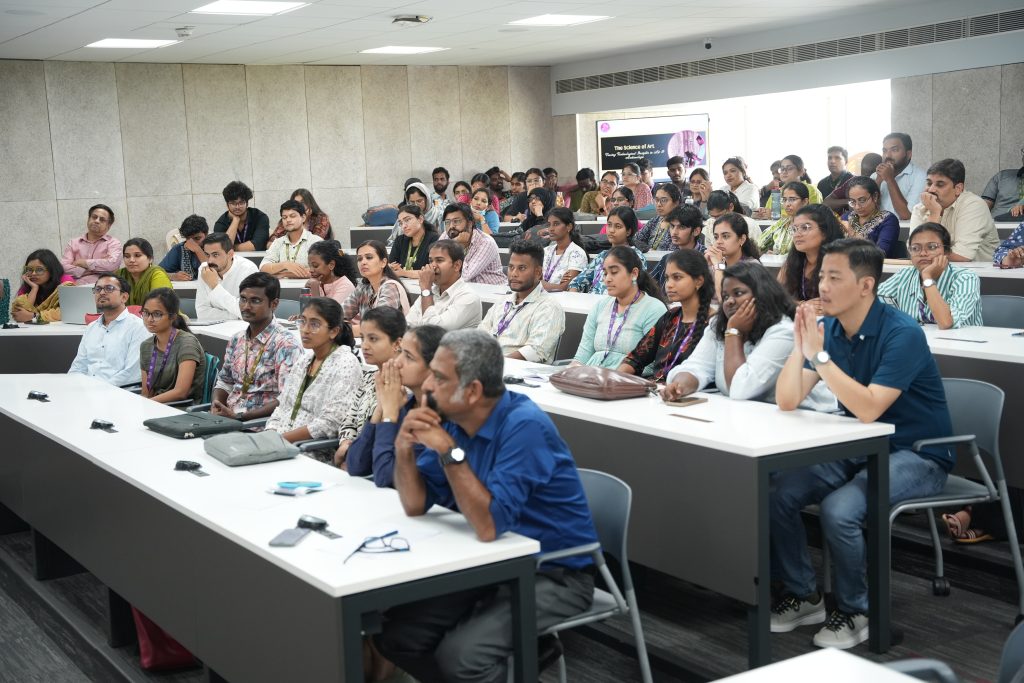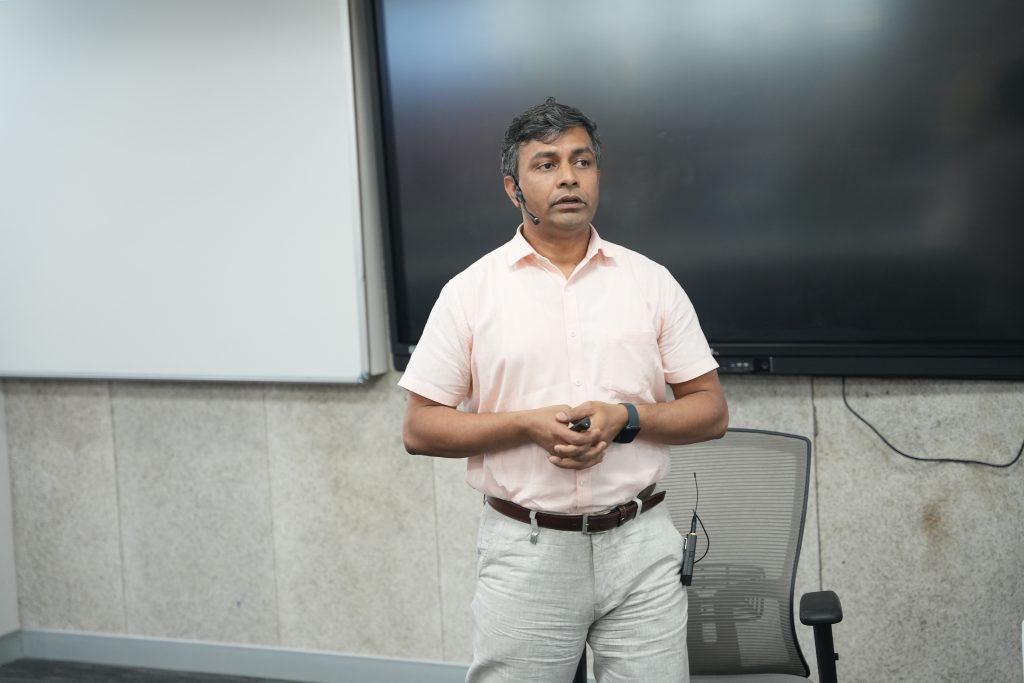Analysing the Dynamism of AR Comics Through Ram Devineni’s Priya Series
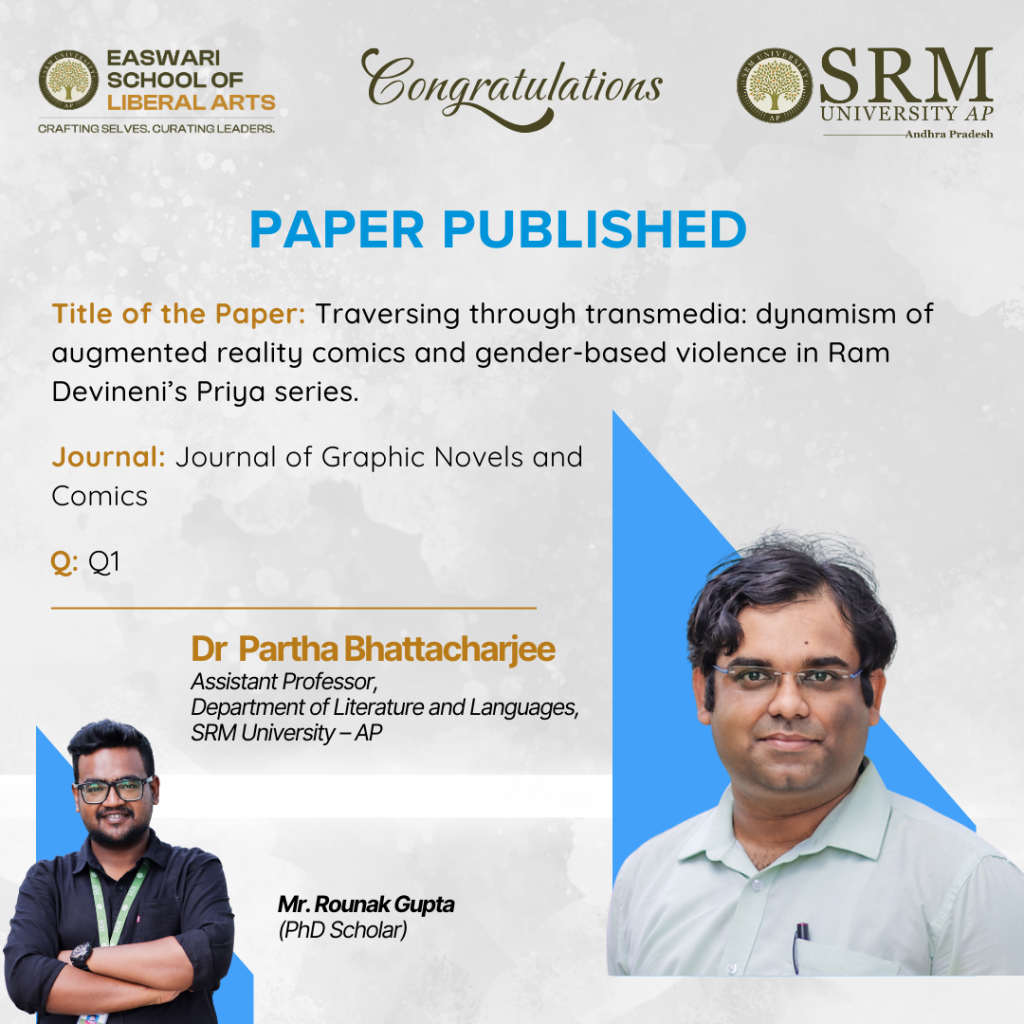
Dr Partha Battacharjee, Assistant Professor from the Department of Literature and Languages, and his PhD scholar Mr Rounak Gupta have published a research article titled “Traversing through Transmedia: Dynamism of Augmented Reality Comics and Gender-based Violence in Ram Devineni’s Priya Series” in the Q1 journal, Journal of Graphic Novels and Comics.
The paper points out how augmented reality can enhance the reading and receptive experience of comics that can address, teach, and educate people on complex social problems like gender-based violence.
Abstract
This article looks at how Ram Devineni’s comic series—Priya’s Shakti, Priya’s Mirror, and Priya and the Lost Girls—use augmented reality and Hindu mythology to raise awareness about gender-based violence in India. It shows how these comics break traditional storytelling methods to engage readers on serious issues like rape, acid attacks, and trafficking.
Practical Implementation/ Social Implications of the Research
It is an analytical research that helps understand how basic building blocks towards gender sensitisation can be developed using comics and augmented reality technology to ‘educate’ people in a much more immersive and interesting way.
The team will continue to develop a theoretical foundation for addressing transmedia approaches in comics and other seemingly static art forms.
Collaboration
Dr Priyanka Tripathi, Associate Professor, Department of Humanities and Social Sciences, IIT Patna
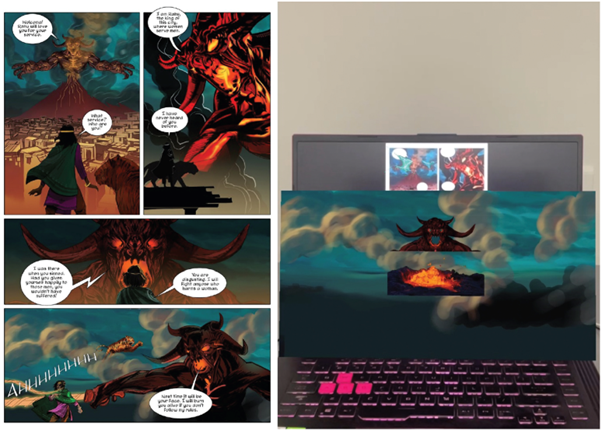
- Published in Departmental News, English Current Happenings, English news, News, Research News
Biofilm-forming Marine Bacteria and their Role in Plastic Degradation
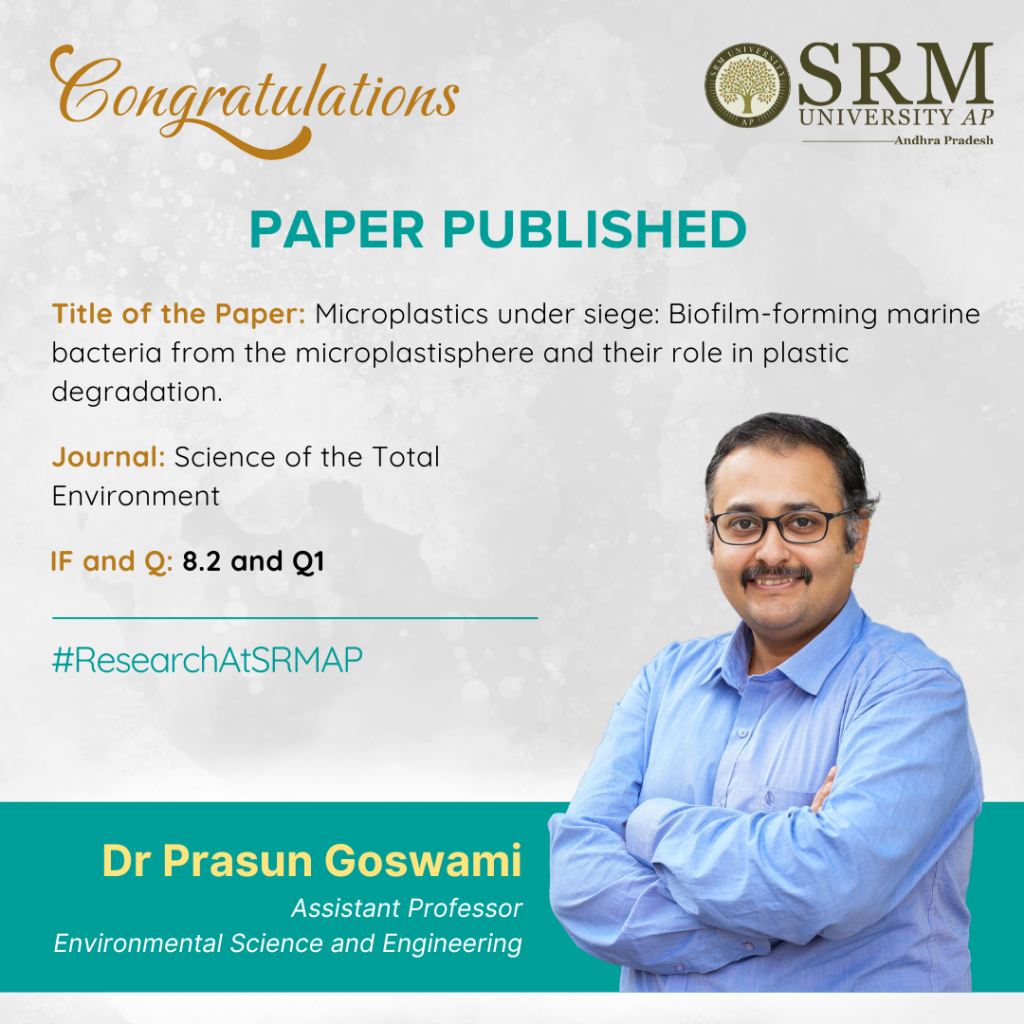
One of the major risks to the world’s ecosystems today is plastic pollution, it affects both the terrestrial and marine ecosystems alike. While India generates around 9.4 million tons of plastic annually, around 5.6 million tons are recycled, and the remaining 3.8 million tons goes uncollected or improperly disposed turning the country into a plastic pollution hotspot.
Addressing the existing gaps in understanding marine plastic and biodegradation which is the breakdown of these plastic materials by microorganisms, Dr Prasun Goswami, Assistant Professor, Department of Environmental Science and Engineering, has recently published a research paper titled “Microplastics Under Siege: Biofilm-forming Marine Bacteria from the Micro Plastisphere and their Role in Plastic Degradation”. The paper was published in the Q1 journal, Science of the Total Environment, with an Impact Factor of 8.2.
Over a period of time plastic debris degrade into smaller pieces, eventually forming microplastics (less than 5mm) which are increasingly found in water sources, including drinking water, and pose a potential threat to human health and aquatic life. Some studies suggest that ingested microplastics may have negative health effects, including reproductive damage. Microbial biodegradation has been regarded as one of the effective ways to deal with plastic pollution.
Abstract
Microplastics, laden with toxins and microorganisms, threaten marine ecosystems by affecting both living organisms and environmental processes. This study explores the diversity and plastic-degrading potential of culturable bacteria colonizing microplastics collected from three coastal sites of the Andaman and Nicobar Islands. Low-density polyethylene (LDPE) was the most prevalent polymer identified in the plastic debris. Among 24 bacterial isolates screened, strain NIOT-MP-52 demonstrated the highest LDPE degradation efficiency (10.79%) which means breaking down the plastic and was subjected to detailed characterization. Analytical techniques (FT-IR, SEM, AFM, DSC) confirmed microbial degradation through surface alterations and thermal changes. The findings underscore the promising role of marine bacteria in biodegrading plastics, offering potential solutions for sustainable plastic waste management.
Practical Implementations of the Research
This research offers a sustainable solution to marine plastic pollution by identifying native bacteria capable of degrading low-density polyethylene (LDPE), a common plastic pollutant. The most efficient strain, NIOT-MP-52, showed significant potential for breaking down plastic, indicating its practical use in eco-friendly bioremediation systems like biofilters or wastewater treatment setups. Socially, this approach supports healthier marine ecosystems, reduces human exposure to microplastics, and encourages nature-based waste management strategies, potentially creating green jobs in coastal communities.
Collaborations
This research was originally carried out at the Atal Centre for Ocean Science and Technology for Islands, National Institute of Ocean Technology, Ministry of Earth Sciences, Government of India, Sri Vijaya Puram, India. National Institute of Ocean Technology, Ministry of Earth Sciences, Government of India, Chennai, India.
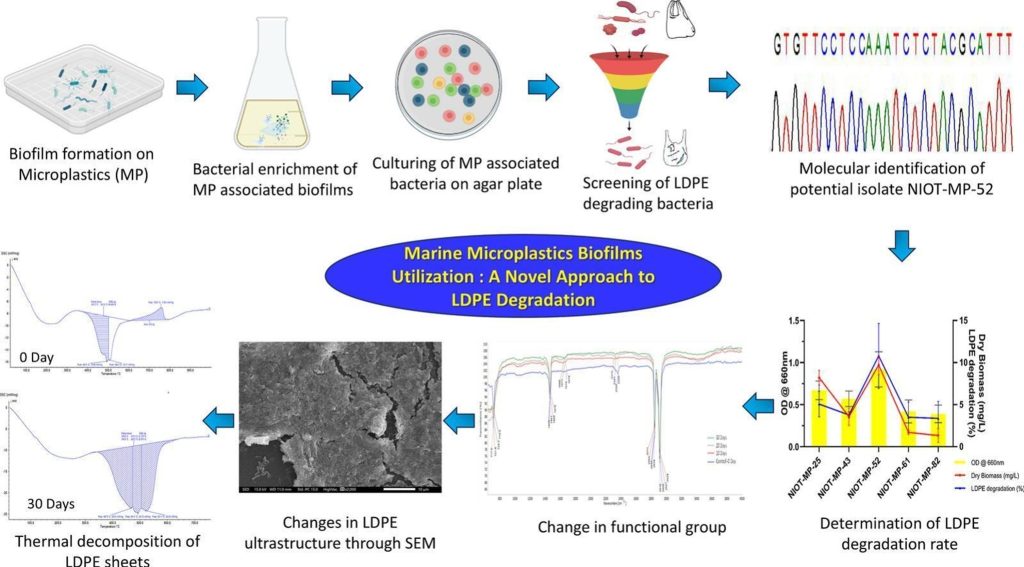
- Published in Departmental News, ENVS News, News, Research News
Two-Day Bootcamp on Drone Technology
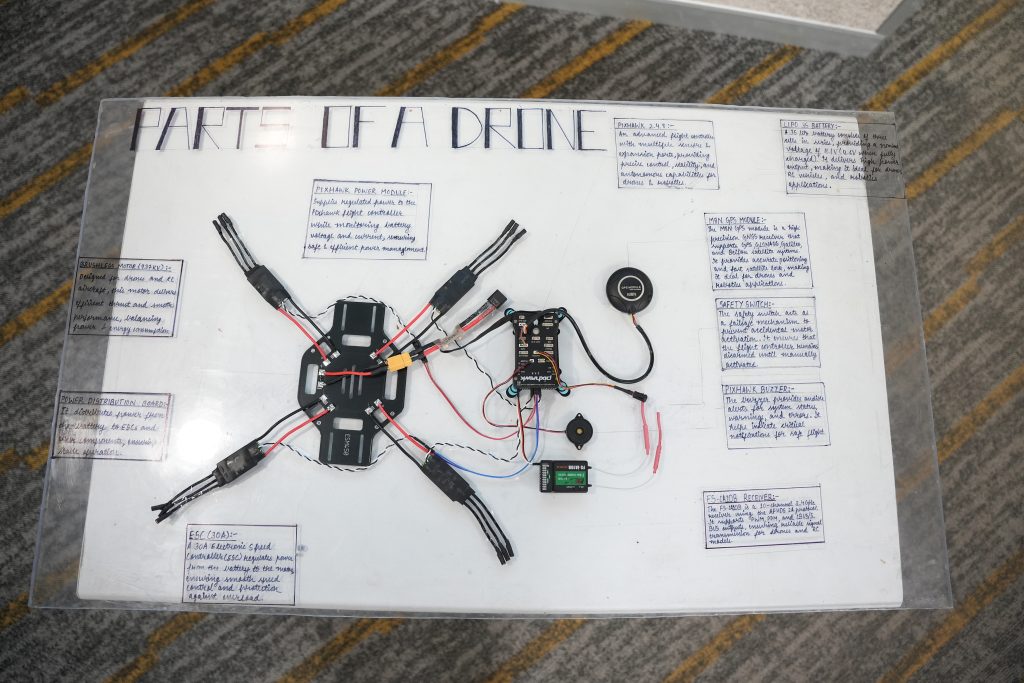
The Department of Civil Engineering and the Centre for Drone Technology at SRM University-AP, in collaboration with IIIT Hyderabad, organised an immersive 2-day workshop on “Drone Design, Deployment, and Applications”. The workshop began with a deep dive into Geospatial Data, Remote Sensing, and GIS, followed by expert talks from Prof. Rama Chandra Prasad (IIIT Hyderabad), Dr Sundar (Vice Chairman, APSAC), and industry leaders from Skyeris Aerotech and VYOMIK Drones.
A thought-provoking panel discussion explored the adoption of drone technology and the challenges faced across academic, industrial, and policy domains. Participants then engaged with teaching aids developed by SRM AP’s Centre for Drone Technology, gaining a hands-on understanding of quadcopter components.
Day 2 was all action! Participants built drones from scratch, configured firmware, and took their creations to the field for real-world flying experience. The advanced session, led by Dr Pranav RT Peddinti (Centre for Drone Tech), Dr Harish Puppala (Centre for Geospatial Technology), and Mr Pruthiv and Mr Manjunath (Skyeris Aerotech), showcased high-end drones with multispectral and thermal sensors—bridging theory with cutting-edge practice.
- Published in CIVIL NEWS, Departmental News, News
Innovations from the Future: CSE Students Showcase Tech Projects
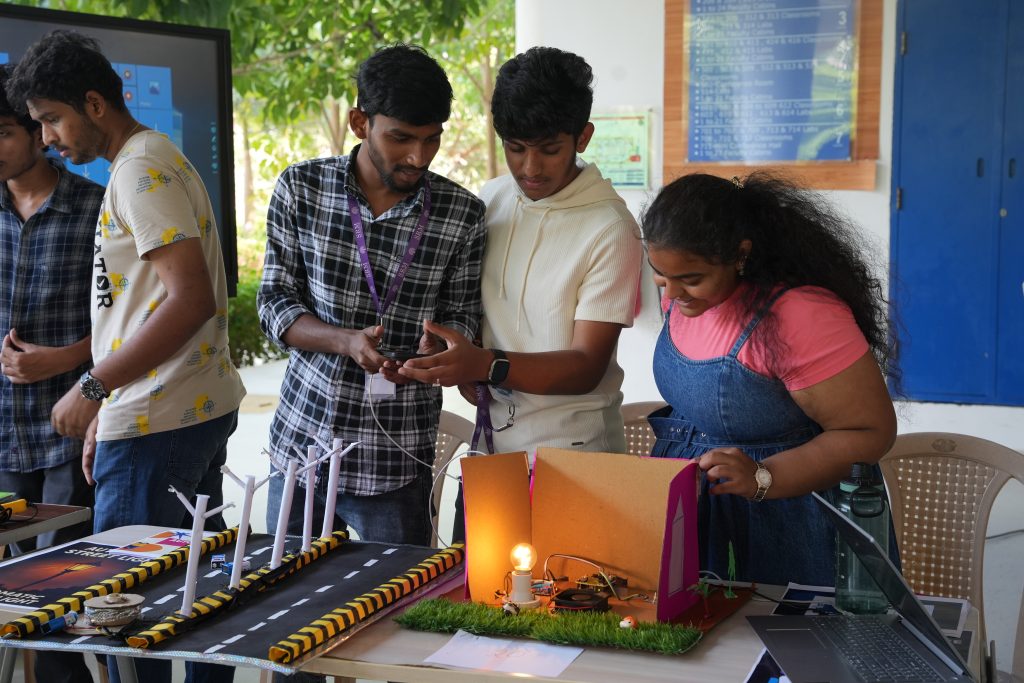
As part of the project-based learning initiative, Dr Tousif Khan from The Department of Electrical and Electronics Engineering organised a Project Exhibition titled “Redefining Boundaries in Technical Learning” for the 2025 batch (CSE-J and CSE-K sections). 120 first-year B.Tech students, organised into 40 groups, showcased their talent and creativity through a series of innovative tech projects aimed at solving real-world problems with smart solutions.
Some of the notable tech demonstrations were:-
- Hand Gesture Controlled Surveillance Car – Used motion sensors to respond to hand commands offering a futuristic approach to remote-controlled security.
- SenseFusion – A mobility aid designed specifically for individuals who are both blind and deaf, combining sensors to provide better spatial awareness and safety.
- The Wireless Power Transmission Device – Eliminating the need for physical cables – an eco-friendly leap toward efficient energy use.
- Smart Plant Watering System – Used soil moisture sensors to automatically hydrate plants, promoting sustainable agriculture with minimal human intervention.
- Solar Tracker – Followed sunlight throughout the day to optimise energy capture
- Automatic Wind Power Street Light – Converted wind energy into reliable, self-sufficient lighting.
- EM Wave Detector – Used CA3130 by detecting unauthorised mobile devices, ideal for ensuring exam hall integrity.
These projects not only reflect technical skill and creativity but also highlight the SRM AP students’ commitment to building a smarter, safer, and more sustainable future. The showcase was a proud testament to the emphasis on experiential learning and innovation brewing within the halls of SRM AP.
- Published in CSE NEWS, Departmental News, EEE NEWS, News
Leading UK Universities Visit SRM AP at the Achievers Dialogue-UK Education Fair
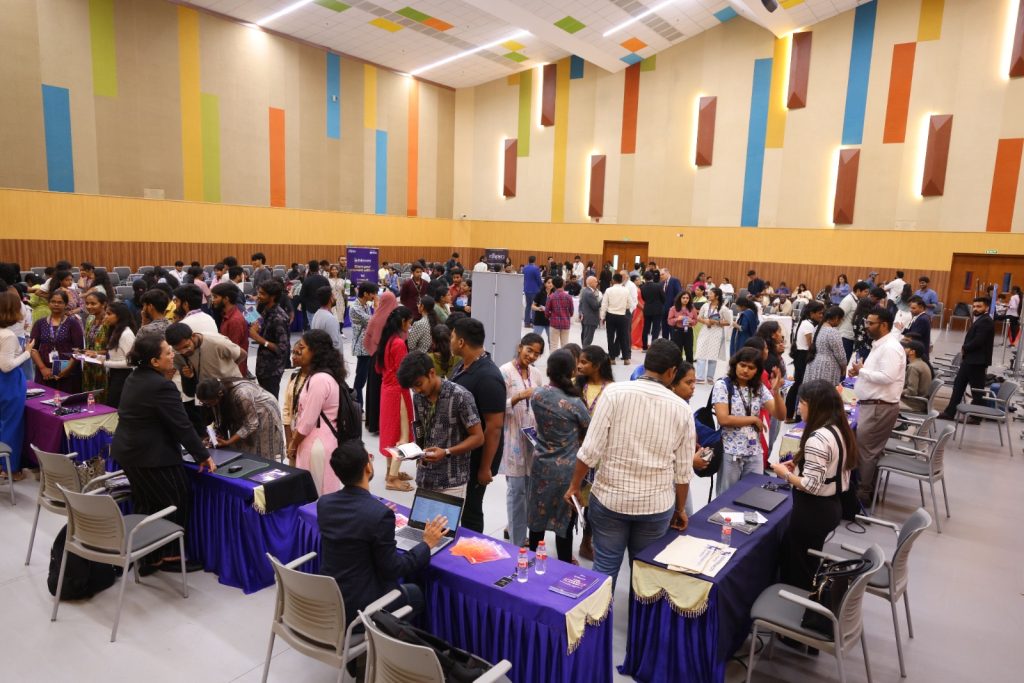
SRM University-AP hosted the esteemed UK Education Fair and the Achievers Dialogue on April 15, 2025, a remarkable initiative to enhance global impact and transform the university into a hub of international learning. The event was a joint venture by the Directorate of International Relations and Higher Studies and Achievers, an award-winning entity under the National Indian Students and Alumni Union UK (NISAU) and the British Council in India that facilitates educational and cultural ties and promotes bilateral student mobility between premier universities in India and the UK.
The event welcomed Mr Virendra Sharma, Former Member of the UK Parliament, London; Ms Sanam Arora, Founder & Chair of the National Indian Students and Alumni Union UK (NISAU UK) and other dignitaries. Emphasising discovering latent talents within the student community, the programme aimed at students interested in pursuing higher studies at renowned universities in the UK.
The event facilitated students’ direct engagement with representatives from leading UK universities, including Imperial College London (Ranked No. 1). Representatives from other universities, such as the University of East London, Birmingham City University, University of Leicester, Manchester Metropolitan University, etc., visited the campus, providing personalised 1-on-1 counselling and insights into the application process and scholarship opportunities, encouraging students to step into the global frontiers and build their own networks.
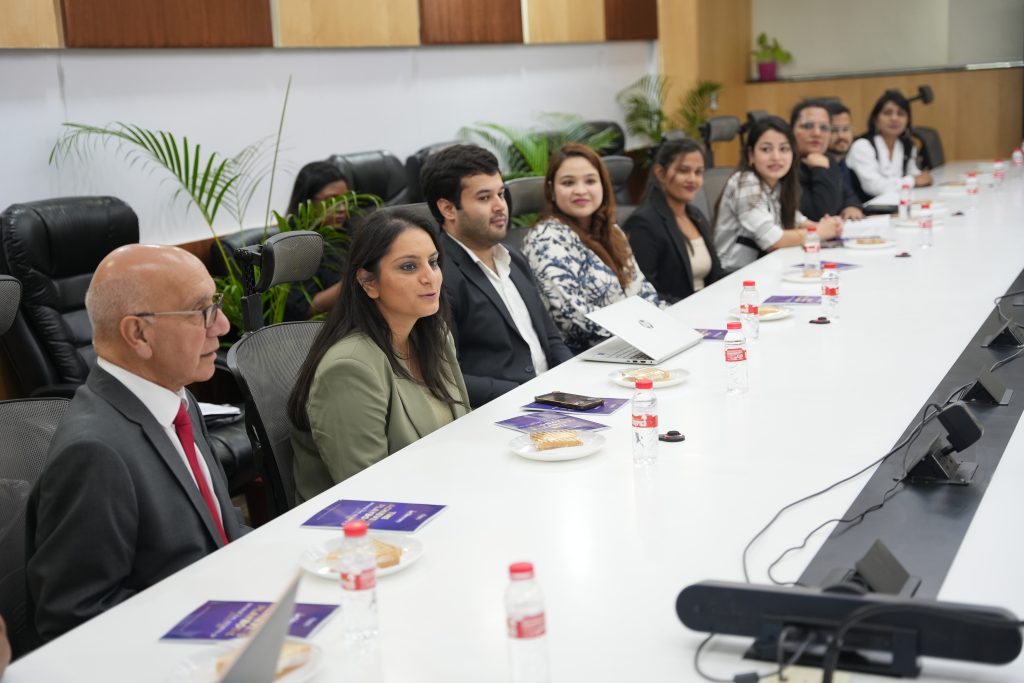
An employability masterclass by the distinguished Ms Sanam Arora was one of the event’s highlights. In her session with the students, Sanam underscored the global trends in careers and employability, trained students on the art and science of personal branding and helped them sketch a roadmap to career success. She remarked, “It is only through personal branding that you can market your unique value and make your mark in local and global labour markets. Build networks, Build your brand and only then can you Build Impact.”
In the roundtable discussion with the university leadership and the various dignitaries from UK universities, the Director (i/c) of International Relations and Higher Studies, SRM AP, Mr Lakshmi Narasimhan stated that as a leading university, SRM AP hopes to strengthen ties with the UK educational ecosystem, opening avenues for partnerships, exchanges, mobility programmes and research collaborations. The programme hopes to bring prospective tie-ups from various UK universities in domains such as research, academics, and projects, further enhancing the university’s excellent reputation.
Through constructive engagement and partnership with a global network of reputed organisations, SRM University-AP aims to enhance collaborative research, faculty and student mobility programmes, and higher studies collaborations to catapult the university into the top ranks in the global and national education frontiers.
- Published in Departmental News, IR-Events, IR-News, News
Tejas 2025: Employee Sports Fest – Concludes with Enthusiasm and Sportsmanship
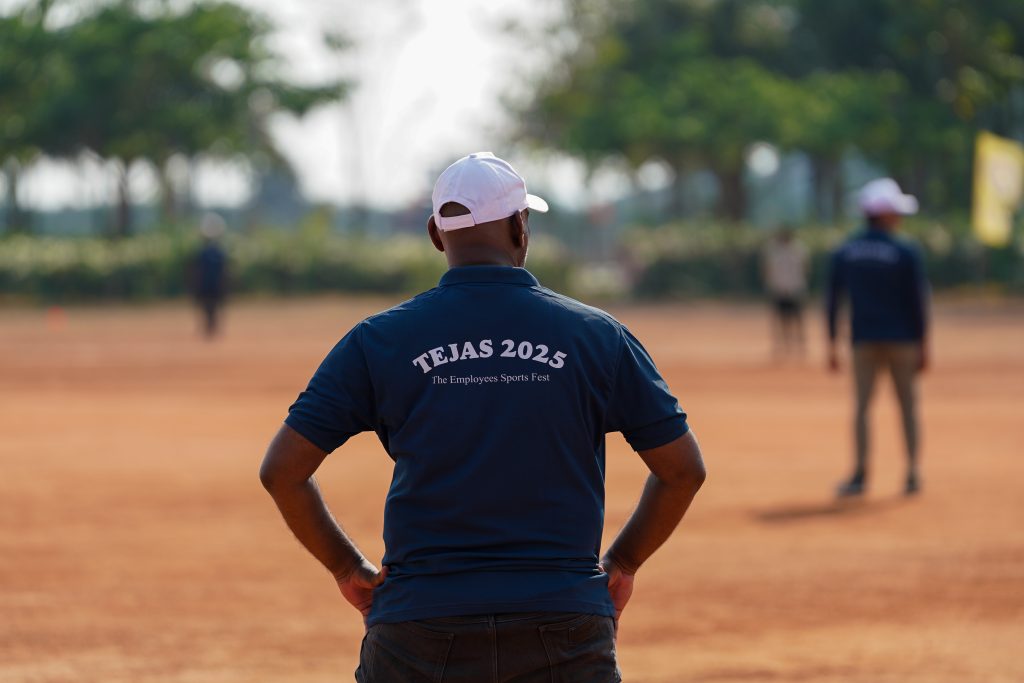
SRM University-AP witnessed a spirited culmination of Tejas 2025, the much-awaited sports fest for employees, with its grand Valedictory Ceremony on April 11, 2025.
The ceremony commenced with video highlights capturing the thrilling moments and memorable performances from Tejas. Mr Isaac Samala Gerard, Director of Human Resource Development (HRD), delivered the welcome address, setting the tone for the evening. He proudly shared that the event saw enthusiastic participation from 373 employees across the University. The felicitation of winners and runners was conducted by Prof. Manoj K Arora, Vice Chancellor; Prof. C V Tomy, Dean, School of Engineering and Applied Sciences (SEAS); and Dr R Premkumar, Registrar.
Badminton – In the Men’s Singles category, Mr P Udayaraju emerged as the winner, while Dr Anuj Pradeep Deshpande secured the runner-up position. In the Women’s Singles, Ms Revathi Balakrishnan was the runner-up.
The Women’s Doubles title was clinched by Ms Revathi and Ms K.M. Moni, with Ms Veda Sri and Ms Sai Arpitha finishing as runners-up. The Men’s Doubles saw Dr Mallavalli Sitha Ram and Mr Pamula Udayaraju crowned winners, while Dr Harish Puppala and Dr Uma Maheshwar Arepalli secured the runners-up position.
Chess – Dr B Deepak Raj won the Men’s title, with Mr Chinnakeseva Reddy B as the runner-up. The Women’s Chess winner was Dr Ananya Mahanti, and Ms Veda Sri took the runner-up spot.
Carrom – Mr K. Srinivas Rao and Ms Navya Kala triumphed in the Men’s and Women’s Carrom categories, respectively. Mr Chintakrindi Manikantha and Ms Veda Sri were declared runners-up.
Rope Skipping – In Rope Skipping, the Men’s Gold medal went to Mr Renuka Babu, with Mr Amos K and Mr Manohar securing Silver and Bronze, respectively. For the Women, Ms R. Ratna Prabha won Gold, followed by Ms Sandhya Rani (Silver) and Ms K.M. Moni (Bronze).
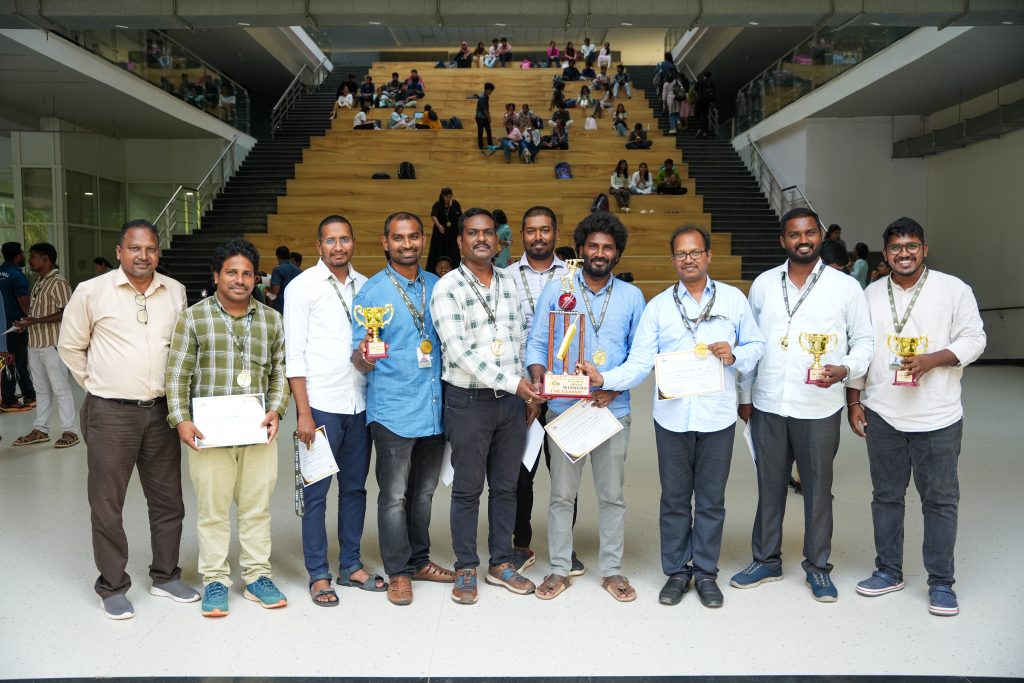
Pushups – Displaying their strength and endurance, Dr KV Ganesh won Gold in the Men’s Pushup category, while Mr Kiran Puli and Mr B Arjun Kumar took Silver and Bronze, respectively. In the Women’s category, Ms Bhanu Priya won Gold, with Ms Navya Kala and Ms T Y Radha securing Silver and Bronze.
Throwball – In the Women’s Throwball event, Team Admin Support claimed victory, while Team Academic Support finished as runners-up.
Cricket – The Cricket tournament concluded with Team CSE Classics lifting the winner’s trophy and Team Admin Aces finishing as runners-up, after an exhilarating series of matches.
Dr R Premkumar, Registrar, addressed the gathering and expressed heartfelt appreciation for the participants, applauding their enthusiasm and sportsmanship. The event concluded with a vote of thanks by Mr Anup Singh Suryavanshi, Director of Campus Life and Maintenance, who acknowledged the relentless efforts of all those who contributed to the seamless execution of the event.
A final video montage encapsulating the vibrant moments of Tejas 2025 concluded the evening, leaving the audience with memories of camaraderie and celebration.
- Published in News, Sports News
Blood Donation Camp Organised at SRM AP
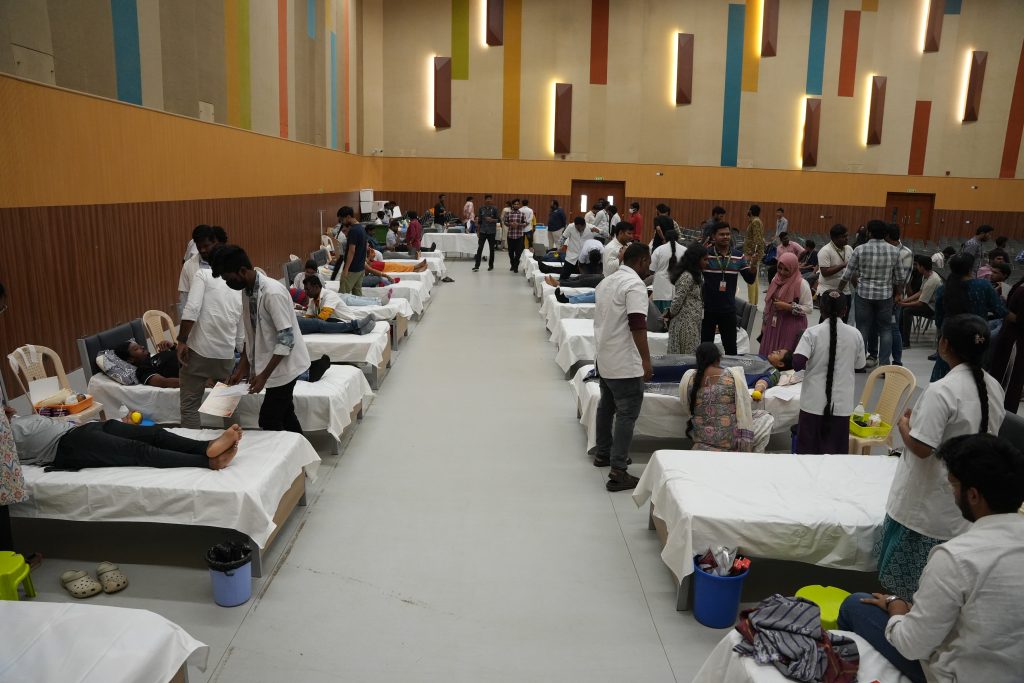
The National Service Scheme (NSS) Cell, in collaboration with the Government Blood Center, Guntur Government Hospital, successfully conducted a blood donation camp on April 10, 2025. The event was formally inaugurated in the esteemed presence of the Honourable Vice Chancellor, Dean of Academic Affairs, and the Director of Student Affairs, who commended the NSS team for this life-saving initiative.
The camp operated from 9:30 AM to 5:30 PM, witnessing impressive participation from students, faculty, and staff members. A remarkable number of units of blood were collected during the event, a testament to the humanitarian spirit and social responsibility fostered within our university.
All donors underwent thorough health screenings conducted by medical personnel from the Government Blood Center to ensure eligibility based on factors like age, weight, haemoglobin levels, blood pressure, and general wellness. Strict hygiene and safety protocols were followed throughout the donation process.
The donors received Certificates of Appreciation from the Government Blood Centre, GGH Guntur, for their voluntary donations and splendid social service. Their participation reflected the selfless commitment that defined the camp’s success.
This initiative not only addressed critical healthcare needs but also served as a powerful reminder of the profound impact a single act of kindness can have on countless lives. Each donor who stepped forward embodied the spirit of service and solidarity that defines our university community. The overwhelming participation and enthusiasm reaffirmed the belief that even a small gesture when multiplied by many, can become a force of immense compassion and change.
- Published in Departmental News, News, student affairs news, Students Affairs Events
“Original Creative Research Will Outsmart AI” – Prof. Ganguli Addresses SRM AP on the 9th Research Day
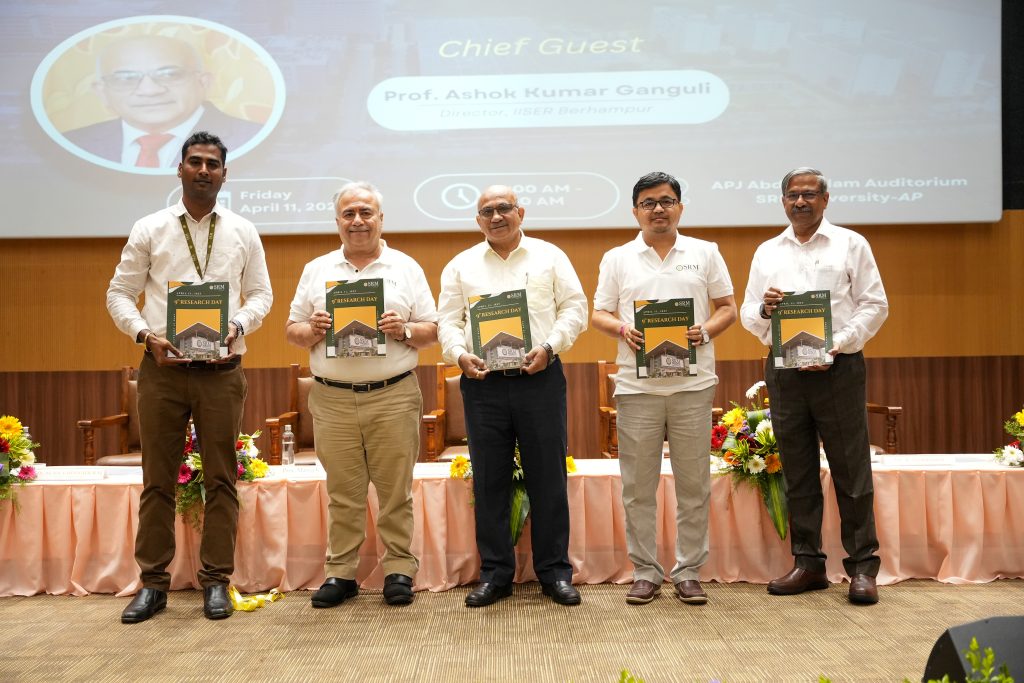
SRM University-AP commemorated its signature event, Research Day Ninth edition, on April 11, 2025, celebrating the relentless spirit of enquiry, excellence and innovation. The esteemed event witnessed the gracious presence of Prof. Ashok K Ganguli, Director-IISER Berhampur, Odisha, as the chief guest along with the university leadership Vice Chancellor, Prof. Manoj K Arora, Registrar Dr R Premkumar, Dean-Research Prof. Ranjit Thapa, Research Day Convenor Dr Sunil Chinnadurai, Deans of other schools, faculty, staff and students.
In his welcome address, Prof. Manoj Arora elucidated the significance of research and innovation in the university’s academic structure and plan to achieve institutional excellence. He stated, “Research Day is fundamentally a platform to identify talented students who have the potential to work on innovative ideas that can be implemented to benefit society.” He also mentioned the future prospects of establishing a Ratan Tata Innovation Hub in Amaravati, where SRM AP will play a pivotal role in one of the five spokes.
Prof. Ganguli, an experienced researcher and scientist, appreciated Research Day as a pioneering initiative by SRM AP to promote a vibrant research culture across all academic levels. He said, “With a faculty pool with excellent pedigree, international exposure and a strong research acumen, SRM University-AP is on the right path to academic and research excellence.” He also discussed the transformation of teaching and research in the future years, emphasising that in the era of the AI revolution, novel, innovative research and creativity will triumph over robotic intelligence.
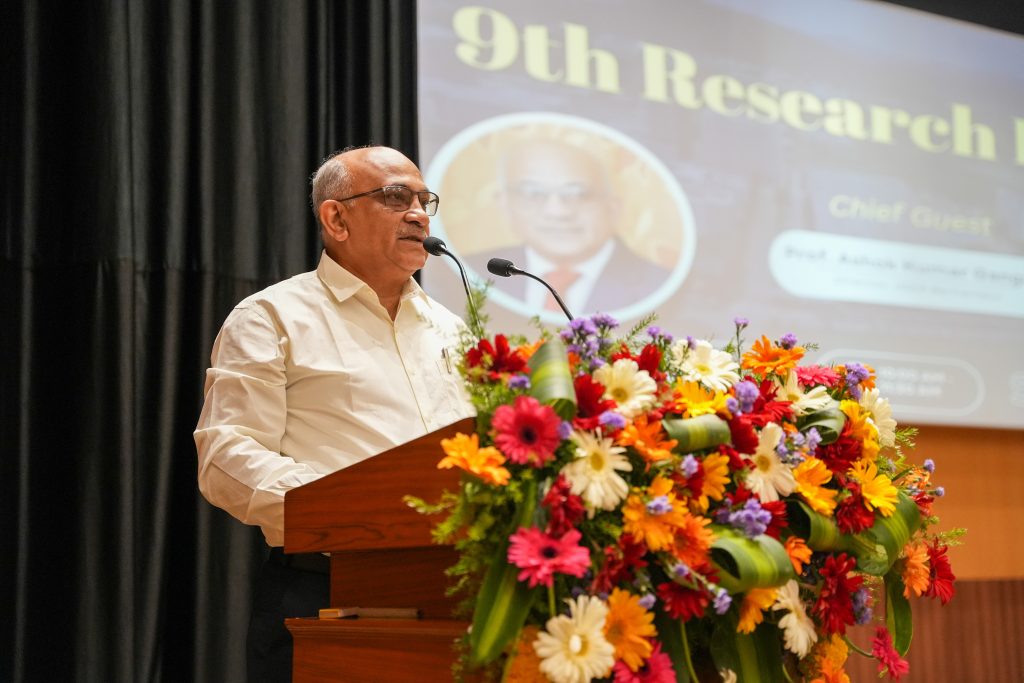
The event revealed the abstract book comprising 263 UG/PG and 131 PhD abstracts in more than 30 thematic areas. 17 students were awarded gold medals, and 5 were awarded silver medals in the UG/PG category. In the PhD category, 10 scholars won the gold medals, and 5 won the silver medals.
For their outstanding contribution to cutting-edge research, selected faculty members of SRM AP were recognised with Best Researcher Awards. Dr Pardha Saradhi M was honoured with the Best Experimental Researcher Award, Dr Murali Krishna E with the Best Theoretical Researcher Award, Dr Dinesh Reddy V with the Best Industrial Researcher Award and Dr Harish Puppala with the Best Young Researcher Award. The faculty were felicitated with a memento and a cash prize of Rs 50,000/- for their high-quality research.
The 9th Research Day has successfully concluded, celebrating talent, perseverance, and innovation. With an unwavering commitment to interdisciplinary research and international collaborations, SRM University-AP advances to the frontiers of academic and research excellence.
- Published in News, Research Events, Research News, University Event
Predicting Network Traffic in Next-Generation Cellular Networks
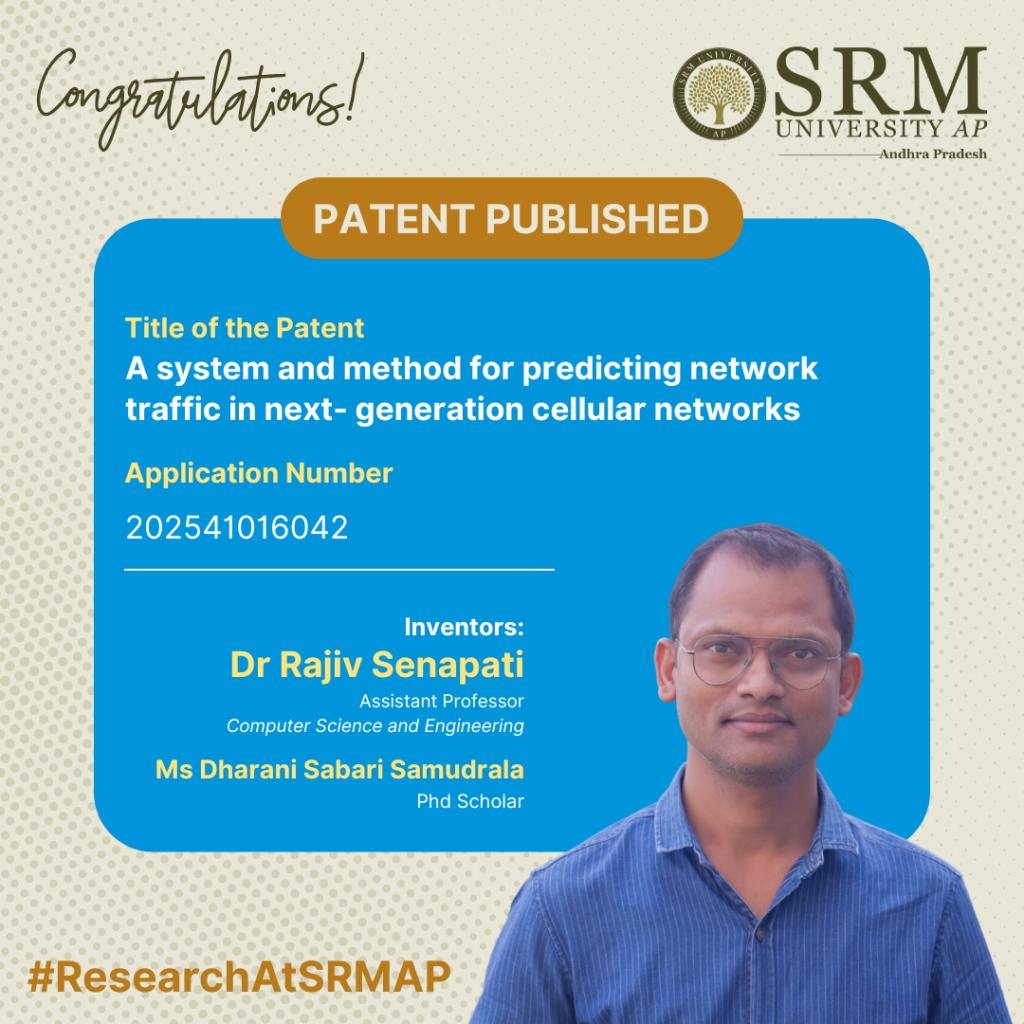
Dr Rajiv Senapati, Assistant Professor, Department of Computer Science and Engineering, along with Dharani Sabari, Ph.D. scholar has published a patent titled “A System And Method For Predicting Network Traffic in Next-Generation Cellular Networks” in the Patent Office Journal. Through their research, they introduced a new model that can predict traffic in networks more accurately while using fewer resources.
Abstract
This study shows a more advanced way to predict traffic in 5G networks. It does this by using a temporal attention mechanism along with a lightweight convolutional layer and hybrid attention layers. The model enhances prediction accuracy by focusing on the most relevant historical data to effectively capture complex traffic patterns. By assigning different weights to key data points, the attention mechanism ensures more precise forecasting. Experimental results indicate that the model outperforms baseline methods, achieving lower Mean Absolute Error (MAE) and Root Mean Square Error (RMSE) across three data services. With fewer parameters and reduced computational demands, the model is highly efficient and suitable for real-time applications. This approach offers a scalable and accurate solution to meet the evolving needs of next-generation cellular networks.
Explanation in Layperson’s Terms
In 5G networks, accurately predicting traffic is crucial to managing resources efficiently and ensuring smooth performance. This is especially important for advanced applications like video calls, virtual reality, and self-driving cars, which require fast response times and reliable connections. By estimating how much data will be used in advance, networks can prevent congestion and maintain consistent service, even during busy times. There are many ways to predict network traffic, but each method has strengths and weaknesses.
Through their research, they introduce a new traffic prediction model that combines two advanced techniques: lightweight convolution and a temporal attention mechanism. Lightweight convolution is a simplified machine-learning method that quickly identifies important patterns in data with minimal processing power. Meanwhile, the temporal attention mechanism captures how network traffic changes over time, identifying key trends and fluctuations. By combining these techniques, the model predicts traffic more accurately while using fewer resources. Tests indicate it outperforms traditional methods by providing more precise predictions with lower errors across three different types of network data. Its low computing power requirements and fewer parameters, make it faster and well-suited for real-time use in 5G networks. Their innovative approach offers a scalable and accurate solution to meet the growing demands of modern, data-heavy applications.

Fig (1) Proposed framework

Fig (2) Architecture of the proposed framework
Practical Implementation/Social Implications of the Research
The invention has important applications in smart cities, self-driving vehicles, network resource management, and real-time traffic monitoring. It optimizes traffic flow, improves autonomous car navigation, efficiently manages network capacity, and provides navigation systems with up-to-date traffic data. The advantages include increased quality of service with low latency, energy savings through intelligent resource allocation, scalability to accommodate more connected devices, and better overall user experience with less congestion. These characteristics make the invention an appropriate solution for the rapidly growing 5G network environment, addressing significant challenges in modern traffic and network management.
Future Research Plan
The team will focus on enhancing the model for both 5G and emerging 6G networks by improving traffic prediction accuracy and efficiency. This includes optimising resource allocation and capacity estimation to better manage network demands. Future work will also integrate diverse data sources, such as IoT devices and satellite networks, to improve predictions across different environments. Additionally, efforts will be made to reduce computational costs, enable dynamic traffic adaptation during peak times, and explore advanced AI techniques like federated learning for secure, real-time forecasting. These advancements aim to ensure more reliable and efficient network performance as technology evolves.
- Published in CSE NEWS, Departmental News, News, Research News
An Introspection into the Science of Art and Archaeology
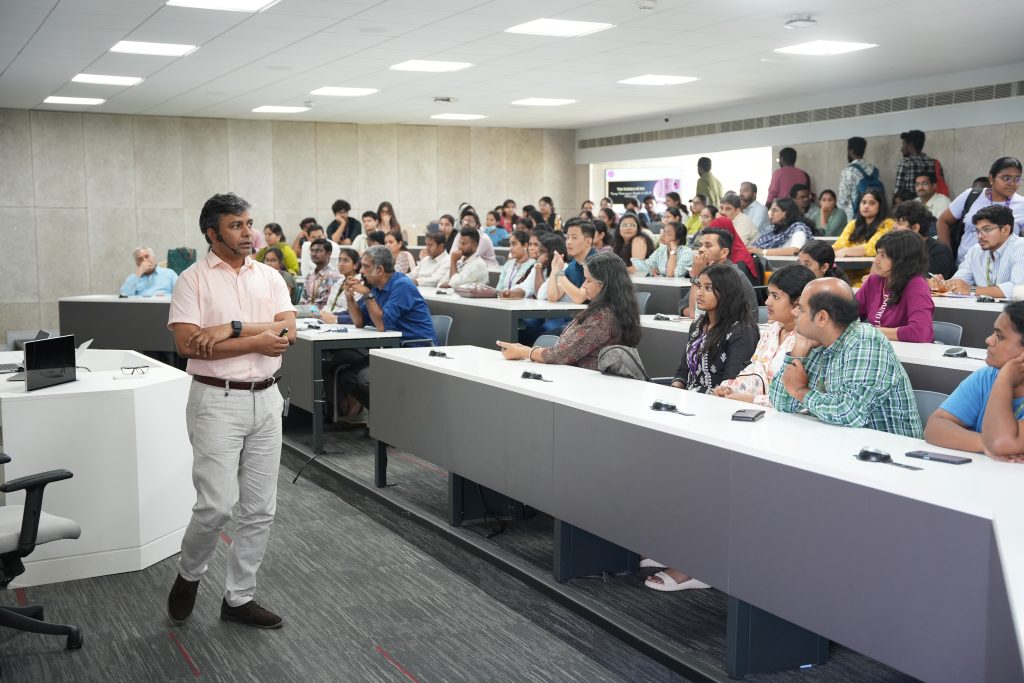
The Department of History, Easwari School of Liberal Arts, hosted Prof. Satish C. Pandey, Dean of Academic Affairs, Professor & Head—Department of Art Conservation, Indian Institute of Heritage, Ministry of Culture, Government of India, and Vice Chair—Directory Board, International Council of Museums—Conservation Committee (ICOM-CC), ICOM, Paris, France, for an insightful lecture on tracing technologies in art and archaeology on April 03, 2025.
In his session, Prof. Pandey shared his expertise in art conservation and archaeological science, offering valuable insights into the study of provenance and technology. He discussed the Site of Kunal from the Harappan Period and the intricate analysis of ancient pottery. His research highlighted the natural techniques used in pottery-making, where shape, colour, and firing methods were influenced by organic materials. Elements such as manganese (black), iron (red), and lime (pure white) were used to create distinct hues, while the lightweight nature of the pots was a result of their composition.
In addition to pottery, Prof. Pandey delved into the conservation of historical paintings. His research has uncovered instances of forgery and modification in artworks intended for public display. By utilising infrared analysis, he demonstrated how changes in oil paints, cracking patterns, and colour modifications over time help researchers restore and authenticate original paintings.
His visit provided an enriching experience, deepening our understanding of conservation science and its role in preserving cultural heritage.
- Published in Departmental News, History Current Happenings, History News, News


